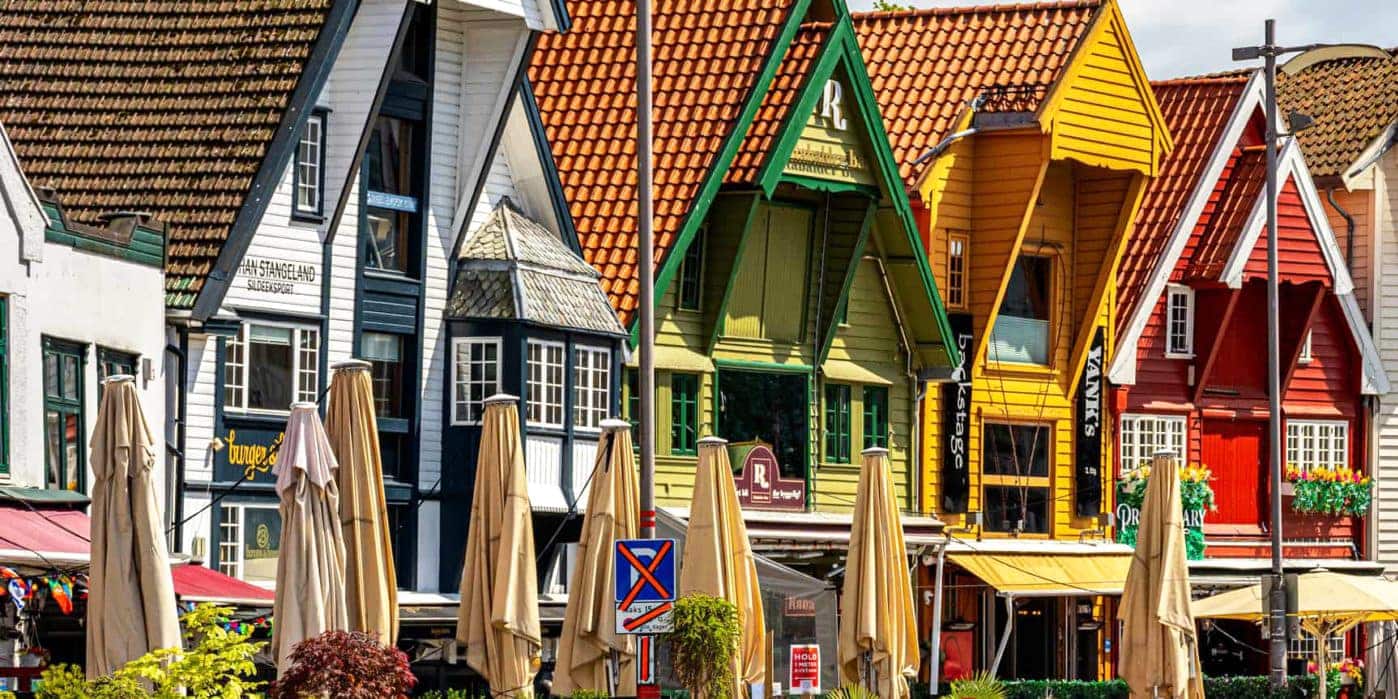Is Stavanger Worth Visiting?
Absolutely! Beyond its beautiful streets and rich cultural tapestry, Stavanger is a gateway to Norway’s ruggedly picturesque southwestern coast. The region has diverse attractions, from dramatic fjords to mountain hikes and historical monuments.
Having lived just two hours away for around 18 months, we’ve explored Stavanger numerous times, each visit uncovering new treasures.
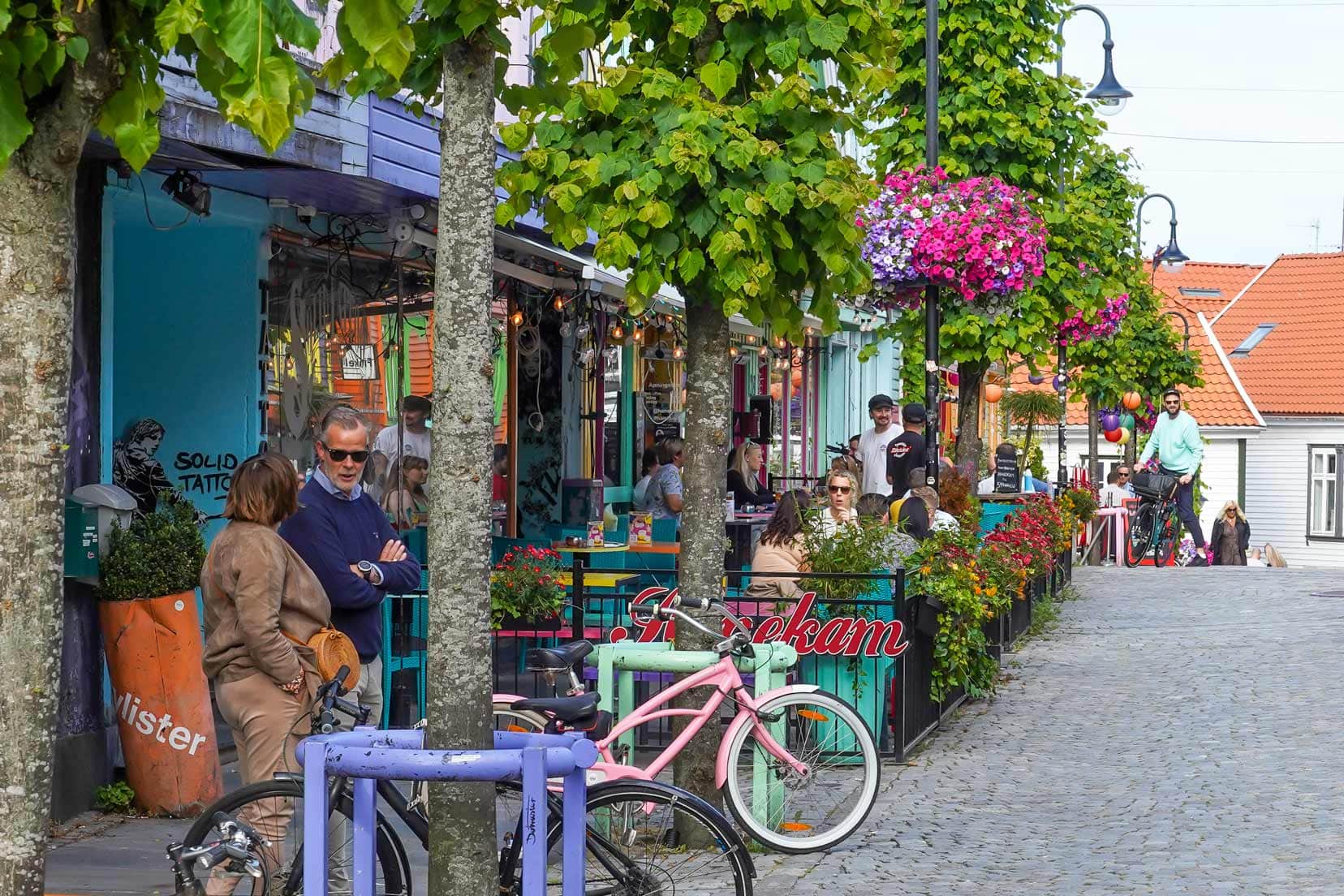
From the captivating old streets of Gamle Stavanger to the dynamic art scenes highlighted during the ‘Nuart’ Street Art Festival, Stavanger encapsulates a perfect blend of history and modern culture.

The city was awarded the European Capital of Culture in 2008, and it continues to celebrate its heritage with numerous cultural festivals that attract hundreds of thousands of visitors.
Join us as we guide you through the top things to do in Stavanger, sprinkled with our personal favourites to ensure your visit is memorable.
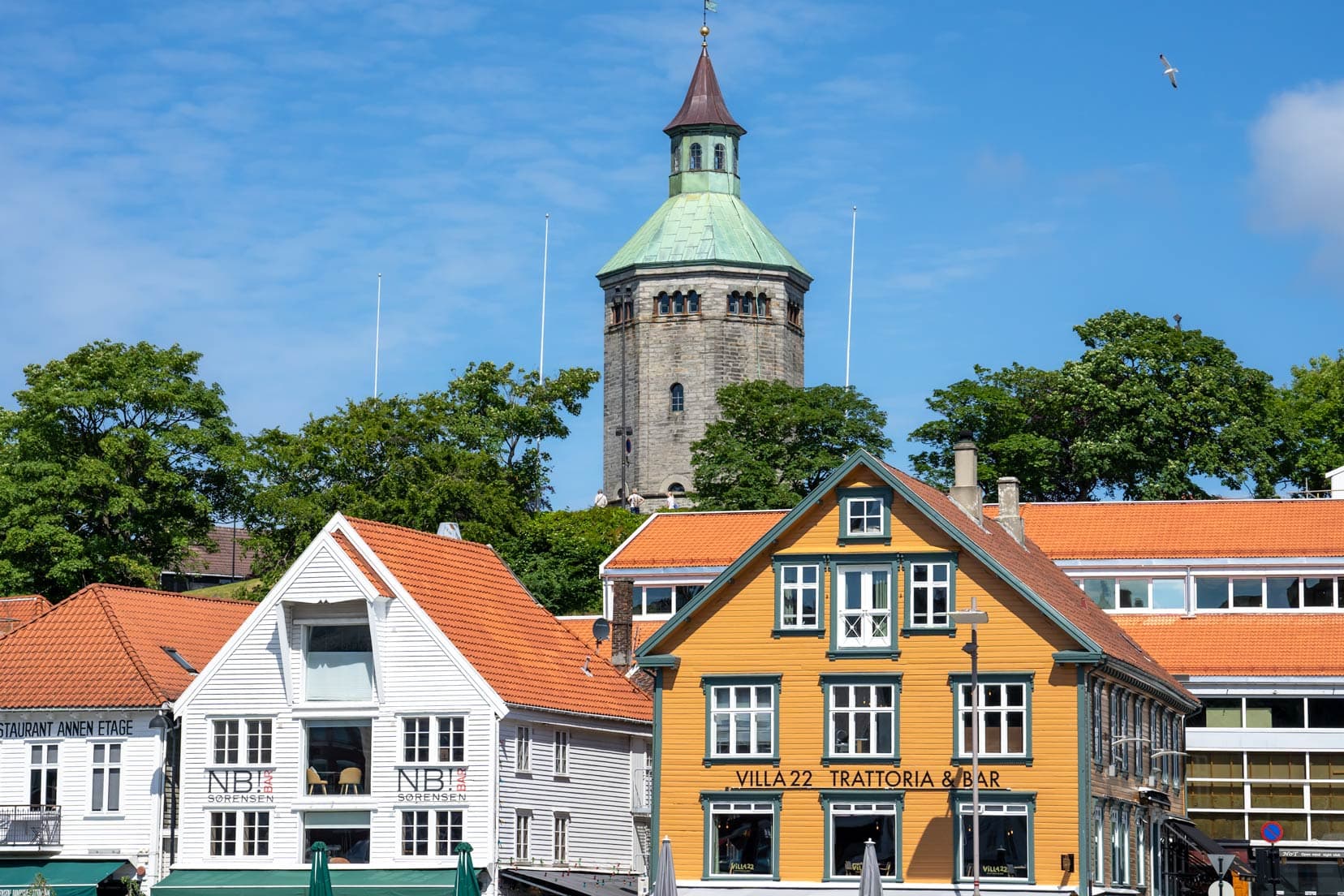
🥜 26 Reasons to Visit Stavanger in a Nutshell 🥜
Whether you’re drawn by the fjords or the tales of ancient Vikings, the city has diverse attractions that promise to enrich your travel experience, making Stavanger a destination undoubtedly worth visiting.
From its famed street art to ancient historical sites and stunning natural landscapes, here are 27 compelling reasons why Stavanger should be on your travel radar:
For History and Culture Lovers
- Wander Old Streets of Stavanger (Gamle Stavanger): Stroll through these charming wooden houses from the 1700s and 1800s.
- Visit the Canning and Printing Museums: Delve into the city’s rich industrial past in these informative museums.
- Stroll Through Øvre Holmegate — the Street of Colours: Enjoy this vibrant area known for its colourful street art.
- Enjoy a Viking Virtual Reality (VR) Experience: Virtually immerse yourself in Norway’s Viking past
- Visit the Norwegian Petroleum Museum: Explore the history and impact of oil in an interactive setting, revealing how this industry has transformed Stavanger.
- Search Stavanger’s Streets for Awesome Street Art: Discover the city’s dynamic art scene celebrated during the Nuart Festival.
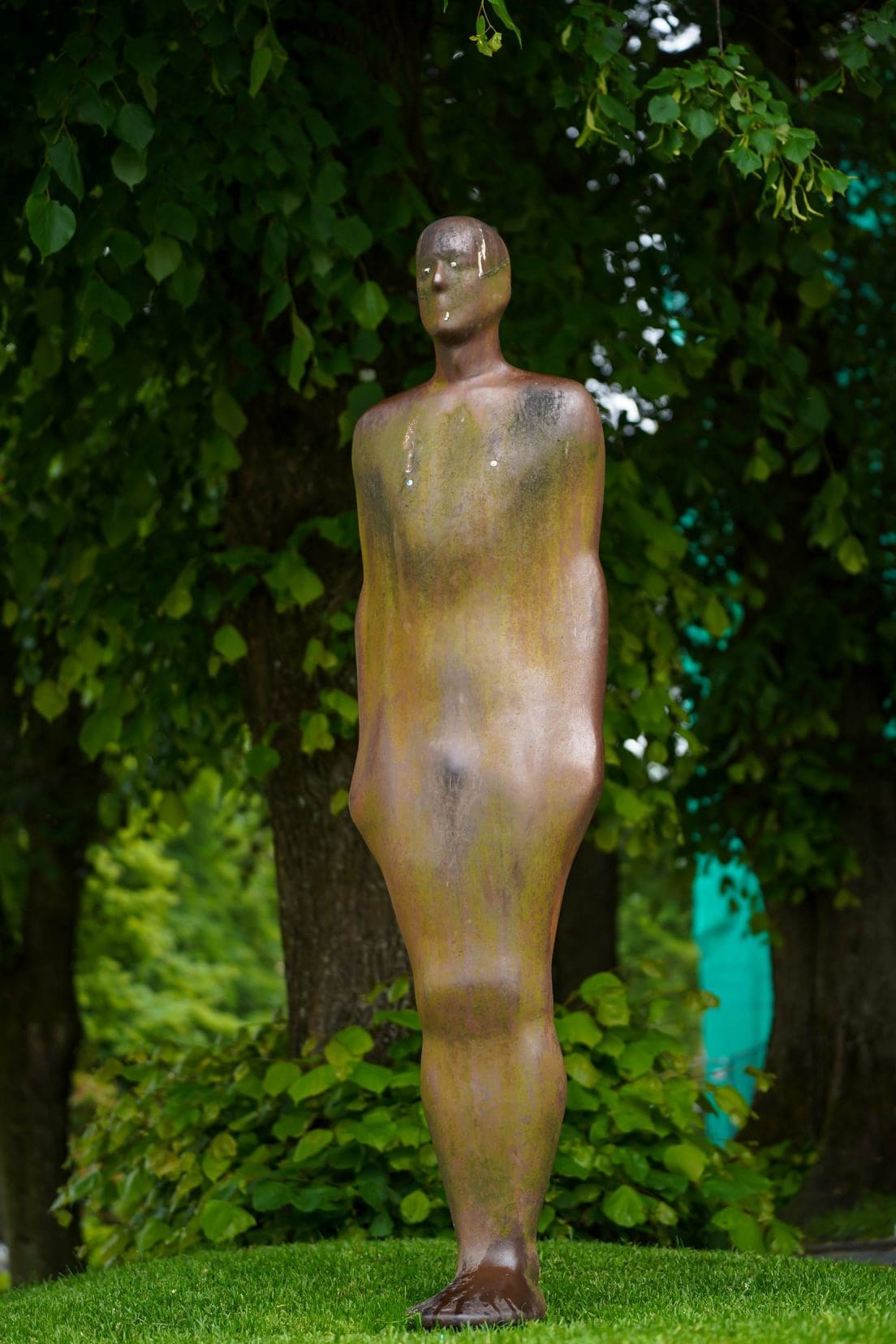
- Find all 23 Broken Column Sculptures: Uncover this intriguing city-wide art installation by Antony Gormley.
- Stavanger Cathedral: Marvel at Norway’s oldest cathedral, continuously used since the 12th century, with stunning medieval architecture.
- Stavanger Maritime Museum: Explore Stavanger’s seafaring heritage, from its days as a major canning hub to its maritime prowess, housed in beautifully preserved seafront warehouses.
- Visit Utstein Monastery: Explore Norway’s best-preserved monastery on Mosterøy.
- Sverd i Fjell (Swords in the Rock): Marvel at this powerful monument symbolising peace.
- Step Back in Time at the Iron Age Farm (Jernaldergåden): Discover life in Norway over 1500 years ago.
- Domsteinane: Explore Norway’s version of Stonehenge, reflecting ancient times and rituals.
- Enjoy Coffee and Culture at Hå Old Vicarage: Relax at this historic site, which has stunning ocean views and an ancient grave site nearby.
- Hang out with the Sheep Around Hitler’s Teeth: Learn about WWII history and these quirky natural sculptures.
- Stavanger Christmas Market: Immerse yourself in festive cheer at the Julemarked in Byparken, where you can enjoy ice skating, gingerbread cities, and seasonal stalls full of gifts and treats.
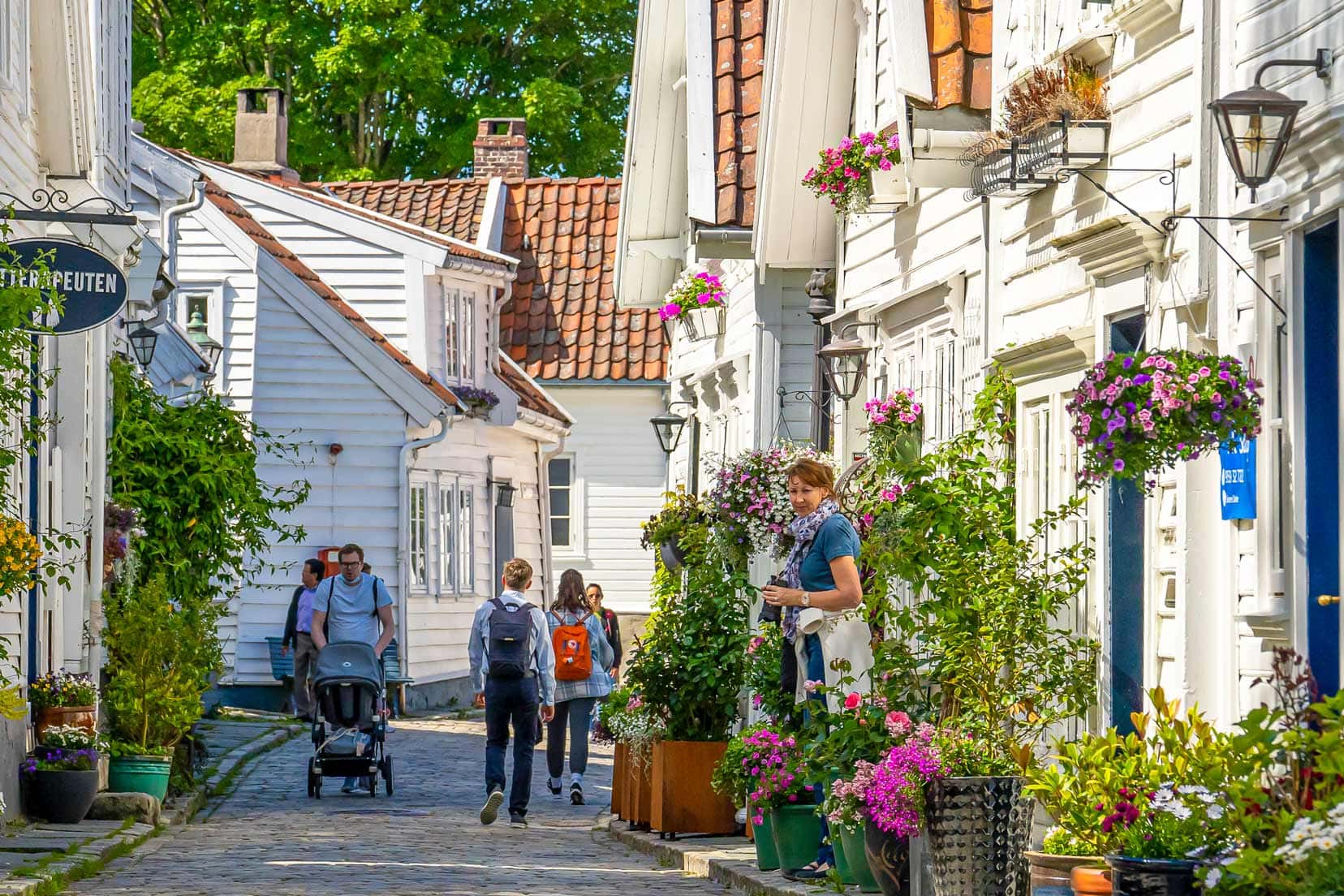
For Hiking and Adventure Seekers
- Hike Kjeragbolten: Test your fitness and courage on this challenging but rewarding hike.
- Hike to Pulpit Rock (Preikestolen): Experience stunning views from one of Norway’s most famous viewpoints.
- Climb the Flørli Steps: Tackle one of the world’s longest wooden staircases for fantastic fjord views.
- Hike along the Kongevegen Route: Follow the historic ‘King’s Road’ for scenic coastal hikes.
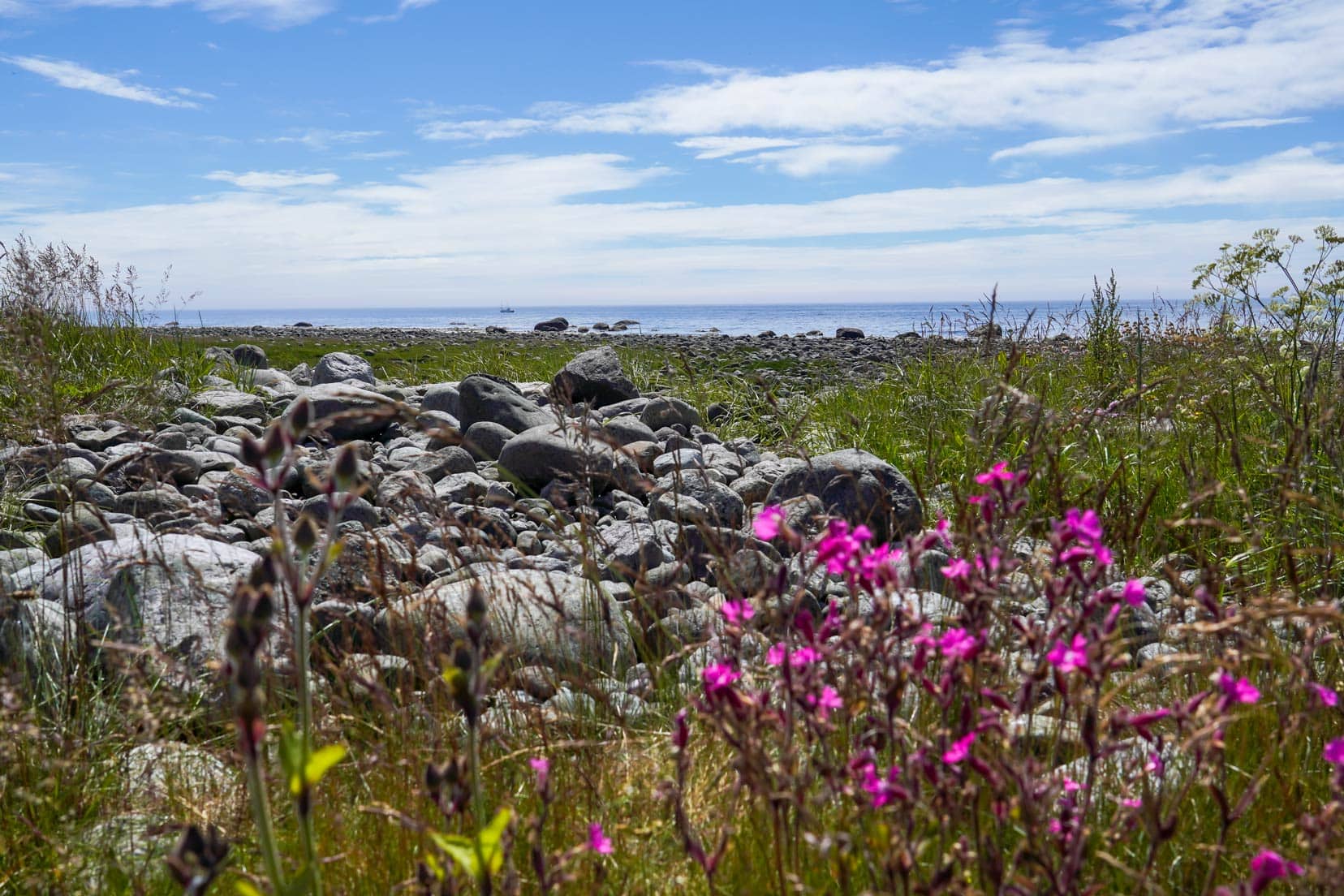
For Nature and Scenic Views Enthusiasts
- Cruise along Lysefjord: Enjoy breathtaking views from the water, including a close-up of the iconic Pulpit Rock.
- Unwind at Solastranden Beach: Spend time at one of the world’s top-ranked beaches for watersports and relaxation.
- Take a trip along the Jaeren Scenic Route: Experience the beauty of Norway’s agricultural heartland.
- Explore Orrestranda Beach and Conservation Wetlands: Visit one of Norway’s longest and most beautiful beaches and wetlands.
- Step Back in Time at Varhaug Old Churchyard: Enjoy the serene beauty and historical ambience.
- Admire the Coastline at Kvassheim Lighthouse: Visit this historic lighthouse with educational exhibits.
Where to Stay:
- Scandic Stavanger City Hotel | 8/10 ⭐️ Ratings (we stayed here – and recommend)
- Hotel Victoria | 8.8/10 ⭐️ Rating
- Radisson Blu Atlantic Hotel | 8.6/10 ⭐️ Rating
Tours to take:
- Stavanger Scenic Fjord Cruise to Lysefjord and Preikestolen | ⭐️ 4.6/5 | ⏳ 3.5 hours | Check availability
- Pulpit Rock Guided Hike with Pickup | ⭐️ 4.9/5 | ⏳ 7 hours | Check availability
- Customised Private Tour with Local | ⭐️ 4.6/5 | ⏳2-6 hours | Check availability
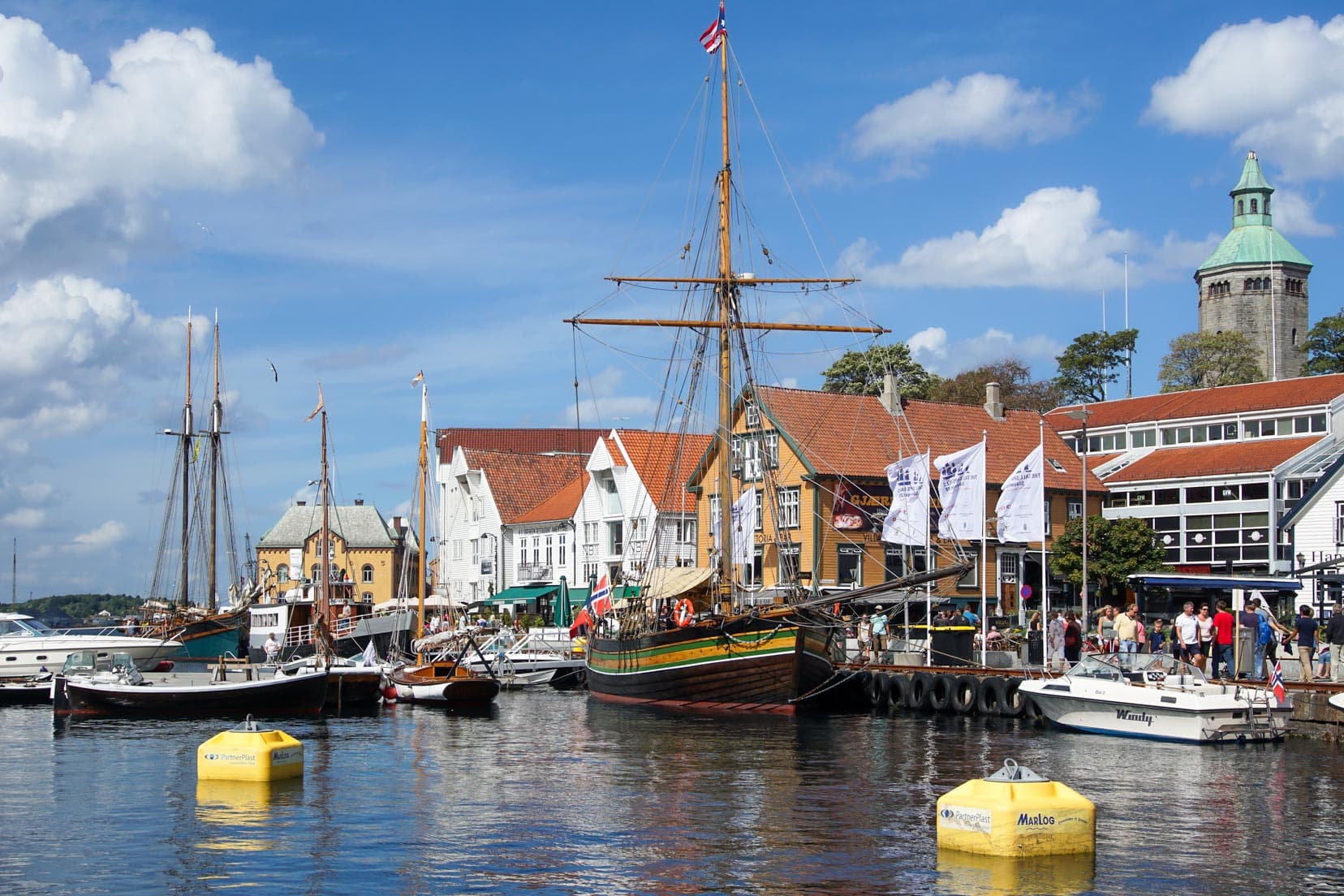
Planning a Trip to Norway?
- 🚗 Hiring a car? We recommend getting a quote from DiscoverCars
- 🚐 Hiring a campervan? We recommend Motorhome Republic
- ⛑ Arranged your travel insurance? Compare quotes from World Nomads & Safetywing
- 🪪 Order your International Driver’s Licence online here
- 🏩 Booked your accommodation? We use Booking.com to find the best deals
- 🐾 Is someone pet-sitting for you? 🐾 We use and love TrustedHousesitters
- (Get 25% off at checkout for new memberships with our discount code: LIFEJOURNEY25)
Map of Stavanger and Surrounds
To help with your planning and orientation I’ve included a colour-coded map and broken the things to do in Stavanger and its surroundings into separate areas.
Video: Snapshot of Stavanger and Surrounds
🚗 Looking to hire a car? We recommend DiscoverCars with free cancellation and ⭐️ 4.5/5 star Reviews on Trustpilot.
For History and Culture Lovers
1. Wander the Old Streets of Stavanger (Gamle Stavanger)
Gamle Stavanger offers a glimpse into the past with its beautifully preserved wooden houses dating back to the late 1700s and early 1800s.
The charm of the old town is vividly displayed in summer when vibrant flowers decorate the narrow streets, making it a photographer’s paradise.
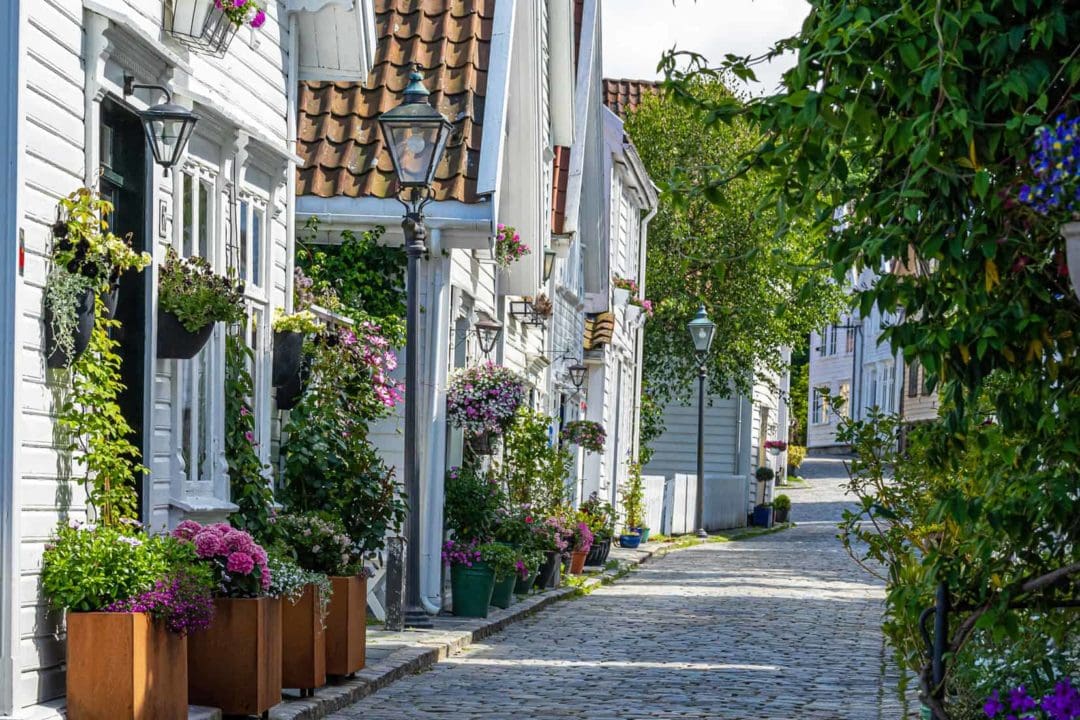
Wild strawberries grow in the cobblestone cracks, and the subtle scent of roses floats in the air. The white timber houses in old Stavanger welcome you with overflowing flower pots.
UNESCO recognized Old Stavanger (Gamle Stavanger) in 1975 as a city worthy of preservation. It is a testament to Norway’s rich cultural heritage.
👣 Book a personal guided walking tour of Stavanger – To see the town from a local’s perspective⭐️ read reviews here
If you appreciate this part of Stavanger, with its beguiling old, white wooden houses, then we suggest you include the more off-the-beaten-path town of Skudeneshavn in your trip. It is about a two-hour drive northwest of Stavanger, on the island of Karmoy.
Its idyllic old streets wind organically between granite rocks and the harbour and are a more intimate experience for the visitor.
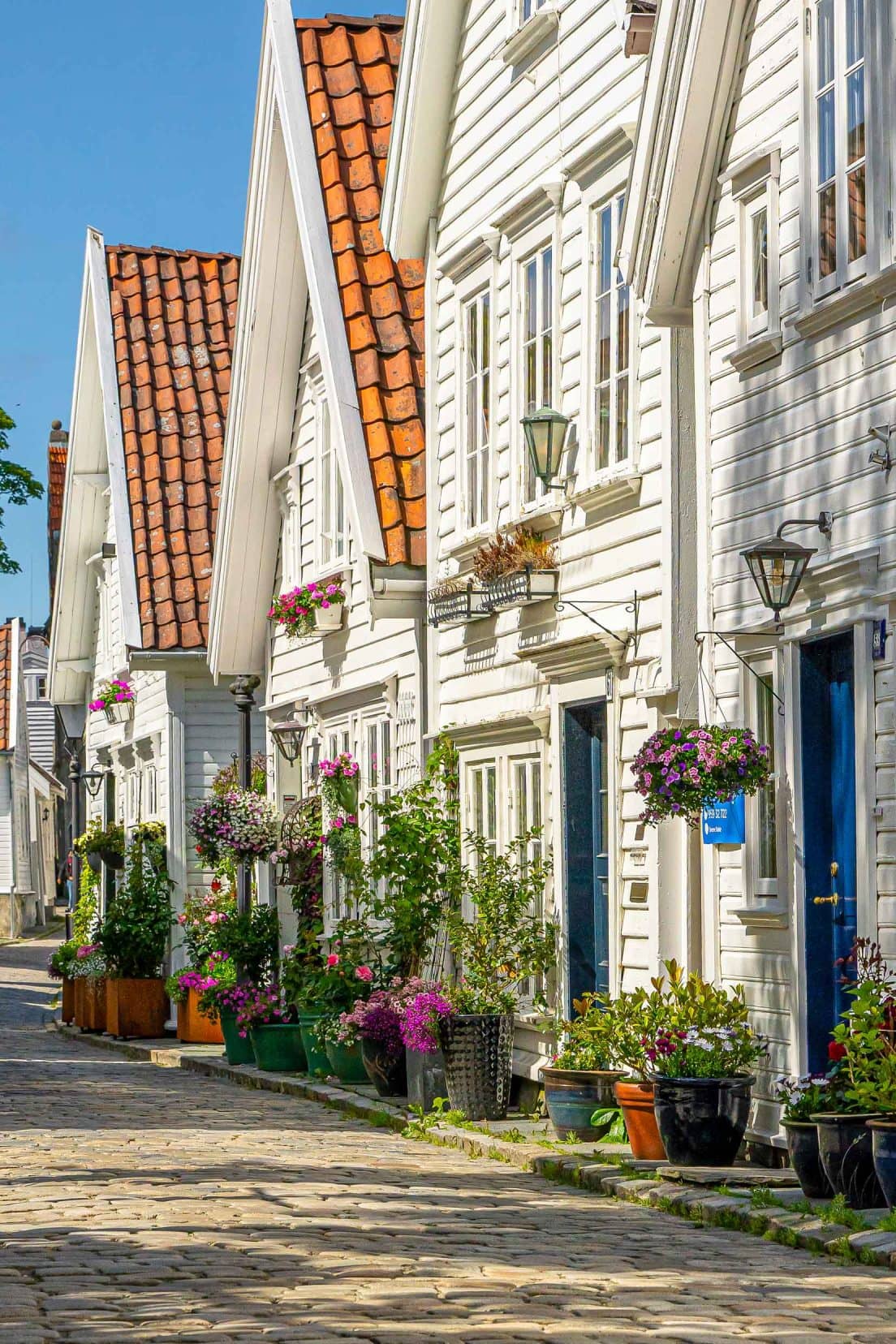
Visitor Tip: Visit early morning or later in the evening to avoid crowds and capture the best lighting for photos. Be mindful that these buildings are tall and cast long shadows so consider shooting mid-morning to minimise shadowing effects.
2. Visit the Canning and Printing Museums
Before the discovery of oil, the canning industry dominated the city of Stavanger between 1900 and 1950. In 1918, there were 60 canning factories in the city.
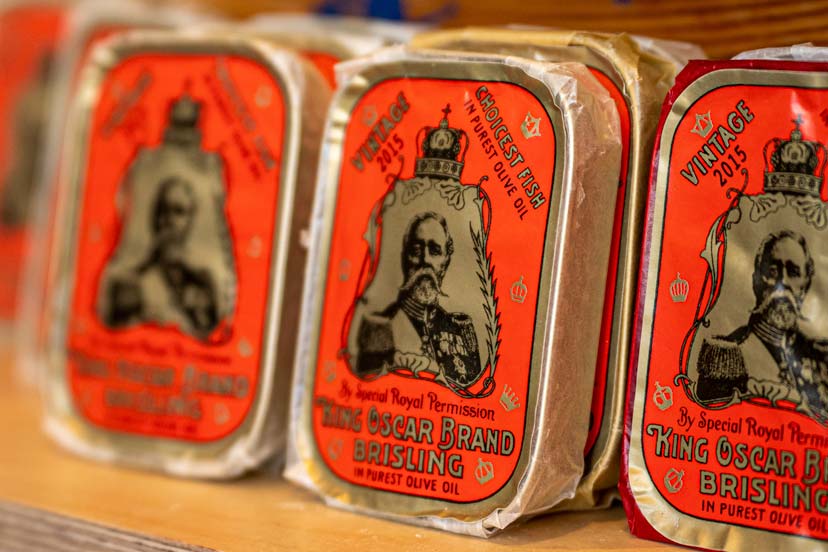
About 40,000 different labels were printed and Norwegian children used to collect the sardine wrappers much like you would collect postcards or stamps.
Jakob Høines, a local in the area, now in his 60s, told me he had a huge collection as a child. He would exchange wrappers with other children to build his collection. He wished he had saved them because today, they would be worth a lot of money.
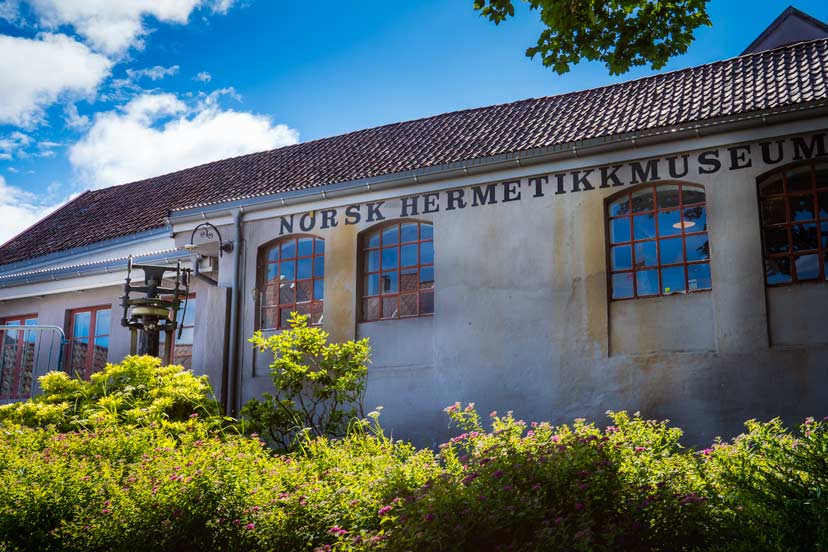
Norway’s sardine canning industry wasn’t packing any normal sardines, though. The icy waters around Norway were home to brisling sardines, said to be one of the highest quality sardines and one of the tastiest.
Today, there is not even one factory canning sardines in Stavanger. One of the factories, however, is now home to the Canning Museum, which tells Stavanger’s sardine story through interactive and historical exhibits.
Visit the two museums to learn more about the interesting history of the sardine canning industry and its eventual demise in Stavanger.
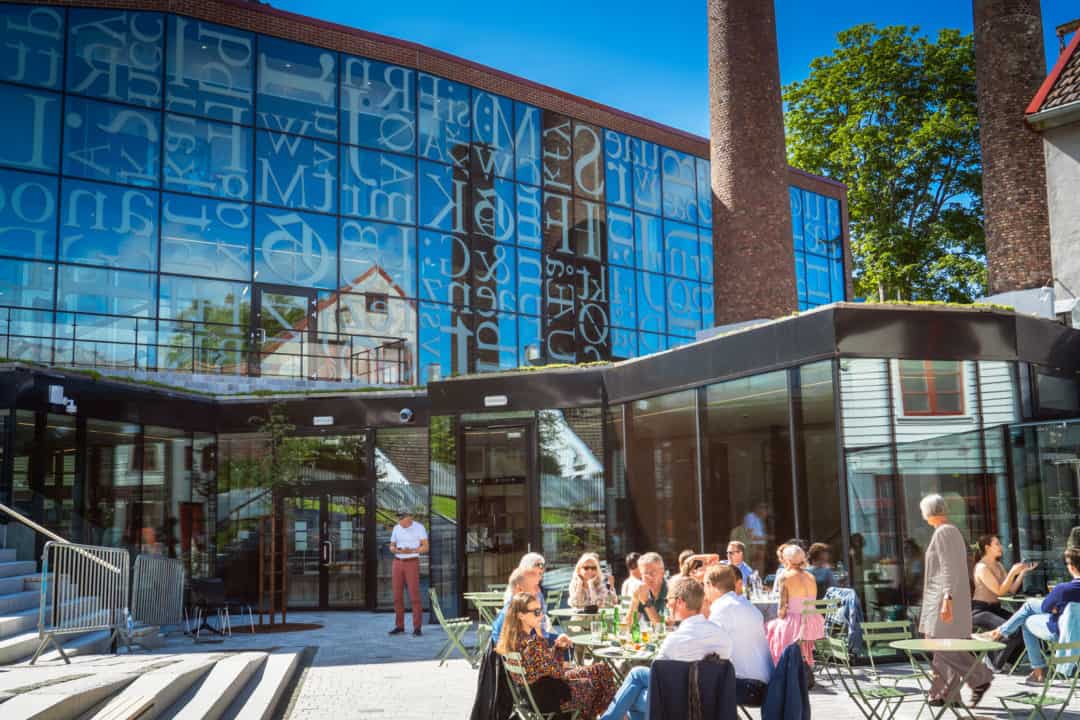
The Canning and Printing museums are in the old town area of Stavanger, with the Iddis café and brasserie nestled between them.
The café’s name is derived from the word ‘Iddisar’ — a local Norwegian term referring to the collection of sardine can wrappers. These wrappers inexplicably linked the canning and printing industries of the past.
The Iddis Café also has a museum shop selling memorabilia and, of course … sardines. The vibe is friendly, and the food is delicious.
3. Stroll Through Øvre Holmegate — the Street of Colours
Øvre Holmegate, or as locals call it, ‘Fargegata’ (the street of colours), is one of the most photographed streets in Stavanger. Locals and tourists enjoy this vibrant strip of cafes, bars, restaurants and shops.
The terraces are bustling, filled with cheery chatter and laughter. The street exudes vivaciousness, and you almost expect the many street art figures to jump off the walls and join in all the frivolity.

And not just the tourists have the hots for Øvre Holmegate. I asked Martinus Bjerga, a local at the Oil Museum, about his favourite part of Stavanger. I was surprised to learn that it was this street of colours.
Quite often, places that are tourist attractions seem to drive the locals away to find less busy, secret local spots.
But here it seems the vibrant ‘Faregata’ is home to all.
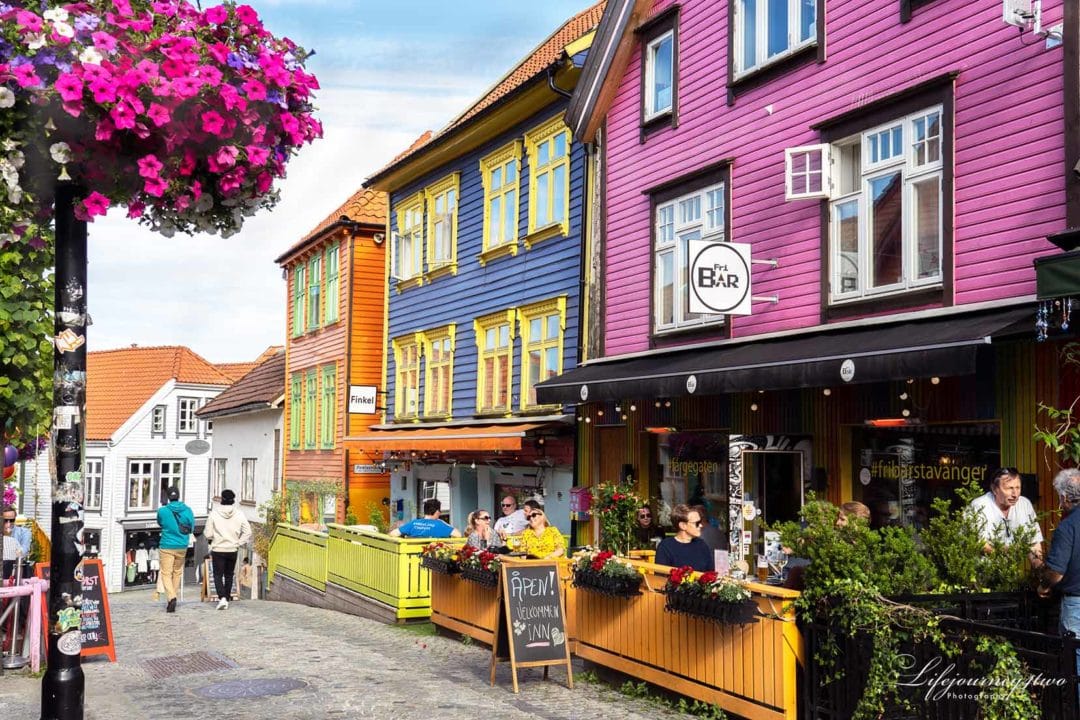
4. Enjoy a Viking Virtual Reality (VR) Experience
At Viking House, near the Tourist Information office, you’ll find Norway’s first Viking virtual reality experience. Take a seat on the Viking boat and experience the saga of Harald Fairhair — who is said to have been the first Viking King of a united Norway.
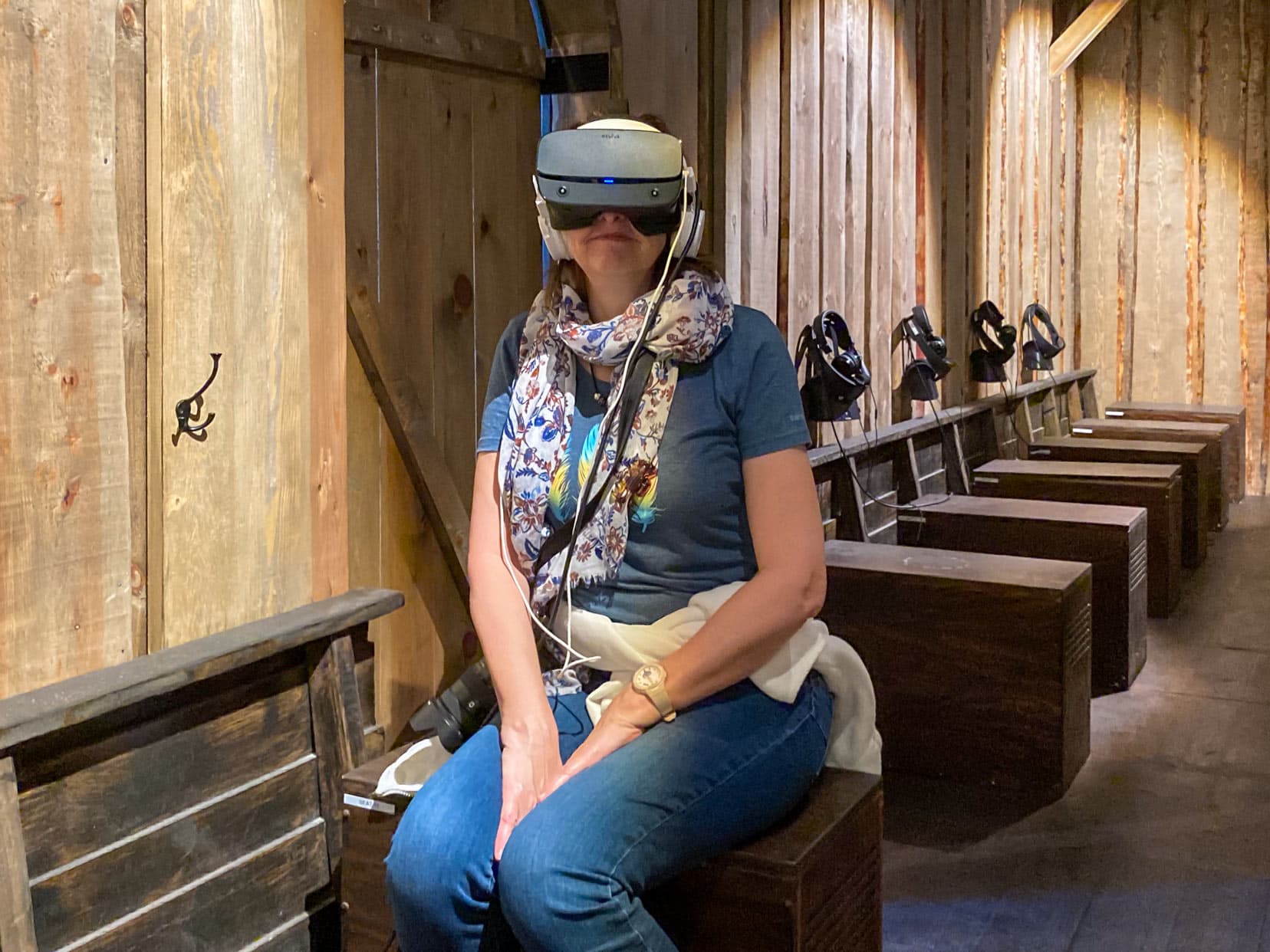
Although the figures in the VR seemed a little jerky at times, the overall experience was quite extraordinary.
My favourite part was watching the northern lights shimmer above us, while Lars’ favourite parts were the battle scenes. I wouldn’t recommend that children under ten watch it because there were a few scary parts.

While at Viking House in Stavanger, you can satisfy any cravings for all things Viking. There is a shop selling clothing, books, swords, and jewellery, and you can even forge your own Viking-style coin.
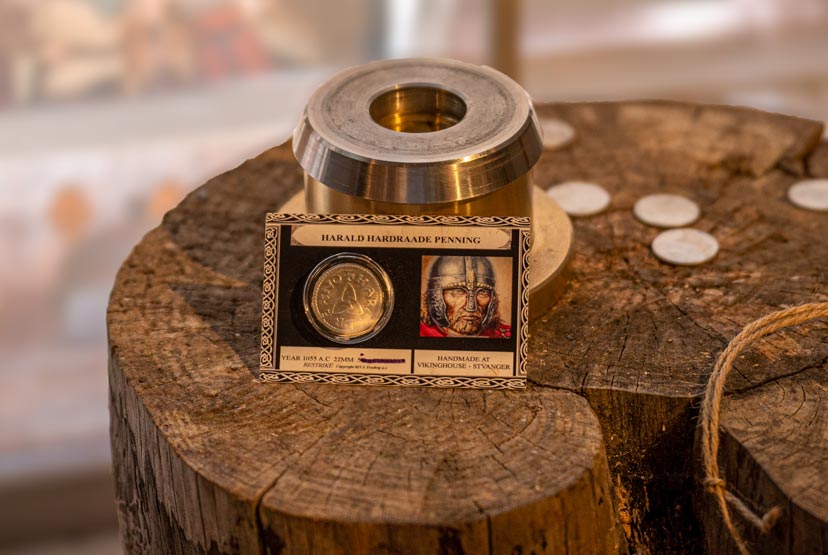
Viking House is only open when the cruise ships are in Stavanger – so check that they are open.
5. Visit the Norwegian Petroleum Museum
Much of Norway’s wealth has come from oil and gas; so not surprisingly, the Oil Museum is found in the centre of Stavanger by the harbour.
Stavanger’s history dates back to the 12th century. However, oil underwent massive growth when discovered off the coast in 1969. The development of its oil and gas industry has given Stavanger the accolade of being the oil capital of Norway.
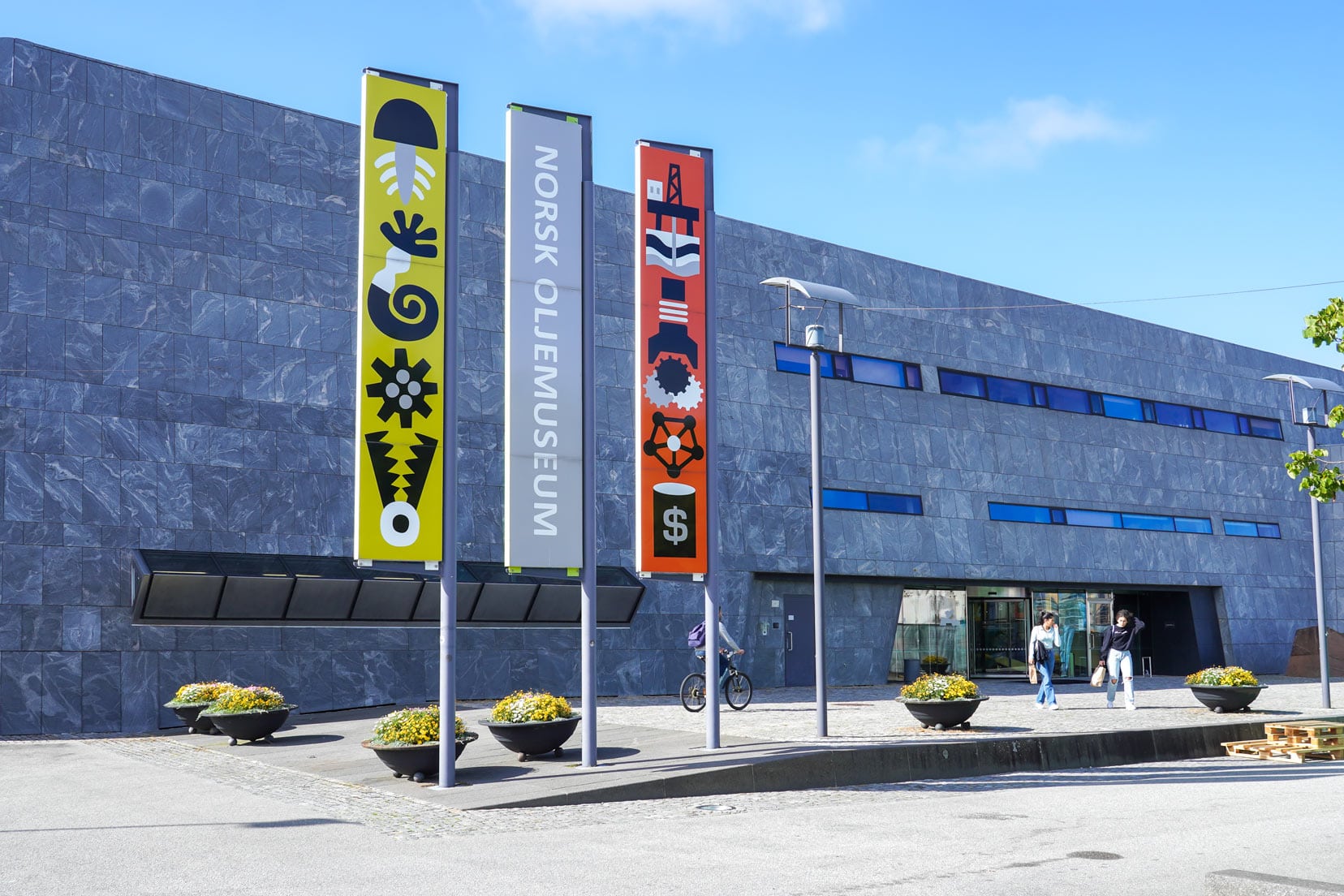
Fortunately, it has retained much of its charm and contradicts any industrialised image that such a label may infer.
From the outside, the museum is an impressive and modern-looking building, with parts jutting into the ocean like an oil platform. Inside, you’ll find a wealth of information about Norway’s oil history, including films, timelines, models, and interactive exhibits.

For the last 50 years, Norway has relied on jobs and revenue from the oil and gas industry. This has led to Norway accumulating enormous wealth, which it has used to provide excellent public services to Norwegians.
However, it is now faced with the challenge of finding new solutions regarding climate change and energy production.
The museum has an interesting exhibit on the Energy and Climate challenge, posing many questions about Norway’s options for the future.
The Stavanger Petroleum Museum recommends you allow about 1.5 hours for your visit.
Find opening times and prices here.
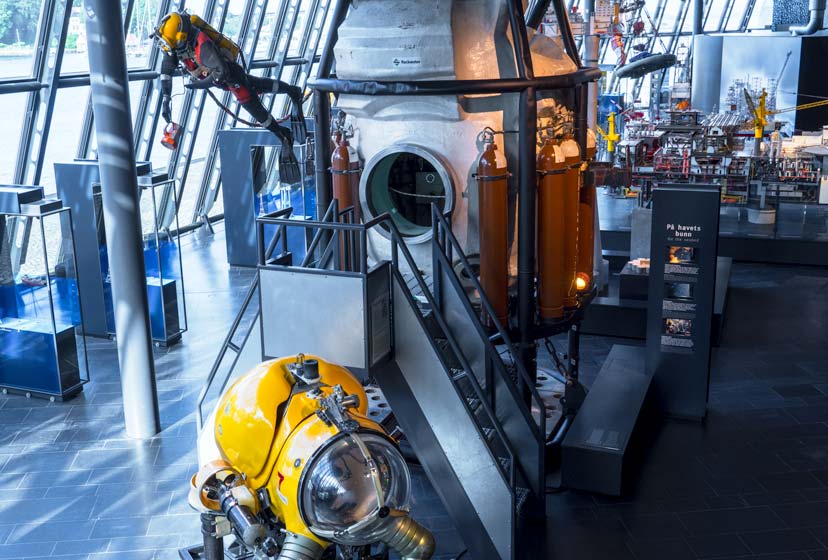
6. Search Stavanger’s Streets for Awesome Street Art
Every year, Stavanger hosts the Nuart Street Art Festival. Stavanger and the surrounding area are rich with fascinating creations of all artistic genres from artists worldwide.
Take your time strolling through the streets, and remember to look up and down. You’ll discover cheeky little paintings hidden around corners and in the most unusual places.

You can see more examples of Stavanger’s street art in our Stavanger video. You could spend a whole day here just hunting down Stavanger’s street art.
Stavanger was awarded the European Capital of Culture award in 2008 and hosts various cultural festivals each year, such as the ‘Nuart‘ Street Art Festival, ‘Utopia Music Festival and Gladmatsfestivaln, which attracts over 200,000 people.
For more festivals and major Stavanger events, take a look here.

7. Find all 23 Broken Column Sculptures in Stavanger
You can find 23 of these ‘rusty man’ figures throughout Stavanger. They are part of the ‘Broken Column’ sculpture project of Stavanger Art Museum.
The sculptures all sit at a different level above sea level and face the sea’s direction. The first is in the museum, the last in the sea just outside a reef at Natvigs Minde.
The British artist Antony Gormley describes the idea as follows:
“They are displaced vertebrae from an imaginary pillar, where the head of one connects to the foot of the other“.
Gormley is known for his creation, the ‘Angel of the North’ erected in the north of England in 1998.
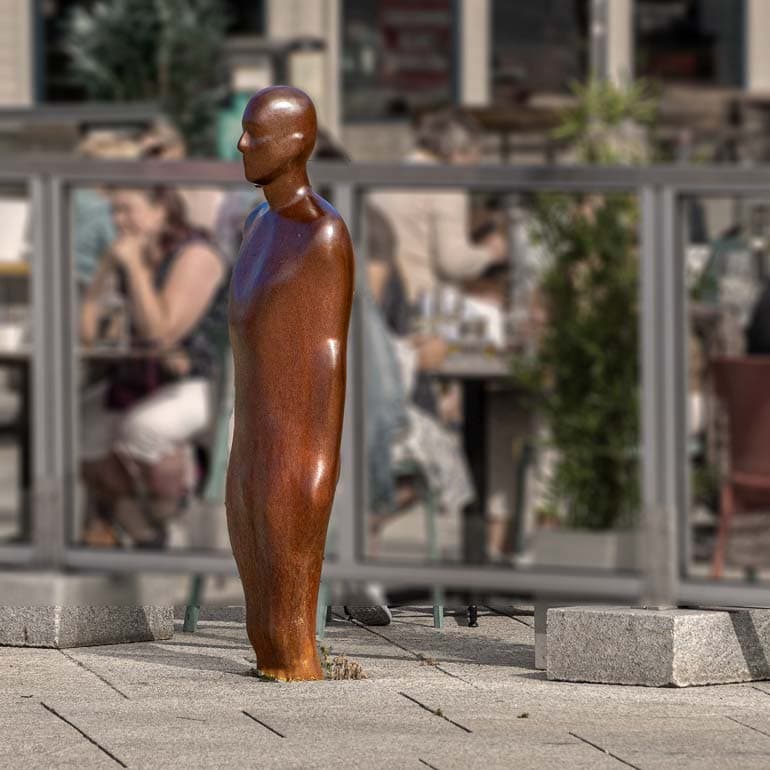
8. Admire Stavanger Cathedral
Stavanger Cathedral presides over the city. As with many historical dates here in Norway, legends and sagas tell us when events may have happened.
According to legend, the church was built in 1125. This makes it one of the oldest churches in Norway.
This cathedral is the only one in Norway that has kept its Middle Age original architecture and the only Norwegian cathedral that has been in continuous use since the 1300s.
The cathedral is in the process of renovation and is scheduled to re-open in August 2024.

9. Visit Stavanger Maritime Museum
Many of the sea houses on the wharves in Stavanger were originally used for salting herring. The herrings were then stored in barrels before being loaded onto ships and sold to European countries. In later years, canning factories operated in the sea houses.
The Stavanger Maritime Museum is in two sea houses opposite the harbour.
Other museums and cultural buildings that you may be interested in are:
- Norwegian Children’s Museum
- Breidablikk Museum — Norway’s best-preserved villa dating from the 1880s with authentic interior
- Kunstall Stavanger — Norwegian and international contemporary art
10. Take a Trip to Utstein Monastery
Thirty minutes north of Stavanger, on one of its many islands, Mosterøy, you’ll find Norway’s only preserved monastery. The Utstein Monastery was built in 1260, and it is believed to have been farmland owned by the first king of Norway, Harald Fairhair.
Harald’s throne was further north at Avaldsnes, on the island of Karmoy, known as the home of the Viking Kings. The Utstein Monastery is now part of the Stavanger Museum.
11. Feel Small Next to Sverd i Fjell (Swords in the rock)
Peace, Unity and Freedom. That is what is represented by the three Sverd i Fjell (Swords in the Rock).
This impressive monument overlooks Hafrsfjord. It is believed that an important battle occurred here in the late 800s between Western Norway’s King Harald Fairhair and several other kings ruling various parts of Norway.
Norse sagas tell stories of Harald’s Viking army winning the battle and uniting Norway into one country.
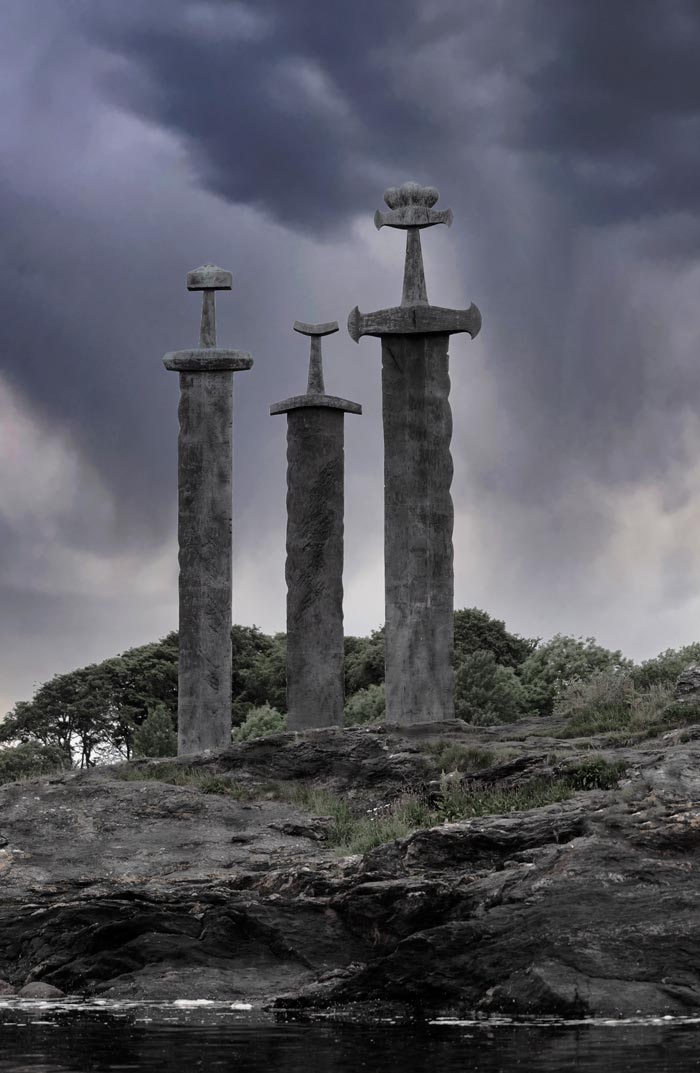
12. Step Back in Time at the Iron Age Farm (Jernaldergåden)
The Iron Age farm in Ullandhaug is part of the Stavanger Museum of Archeology. It provides an insight into life in the late Iron Age, 1500 years ago.
This farm was built on the original ruins, which date back to approximately 350 – 550 AD. It has an exhibition area, a visitor centre, and many interactive activities.
13. Imagine Pagan Times at Domsteinane
Domsteinane is like a mini-Stonehenge. Stone circles are not common in Norway, and this is one of the most peculiar in Scandinavia. The original stones were first described in 1745, but some think they may have been older, dating from the early Iron Age.
The 24 stones are arranged in a circle, with a rectangular stone slab in the centre and eight rows of smaller stones radiating out from the centre, like spokes on a wheel.
It isn’t known what the stones’ purpose was, but their circular design suggests it was a place of worship to the Gods.
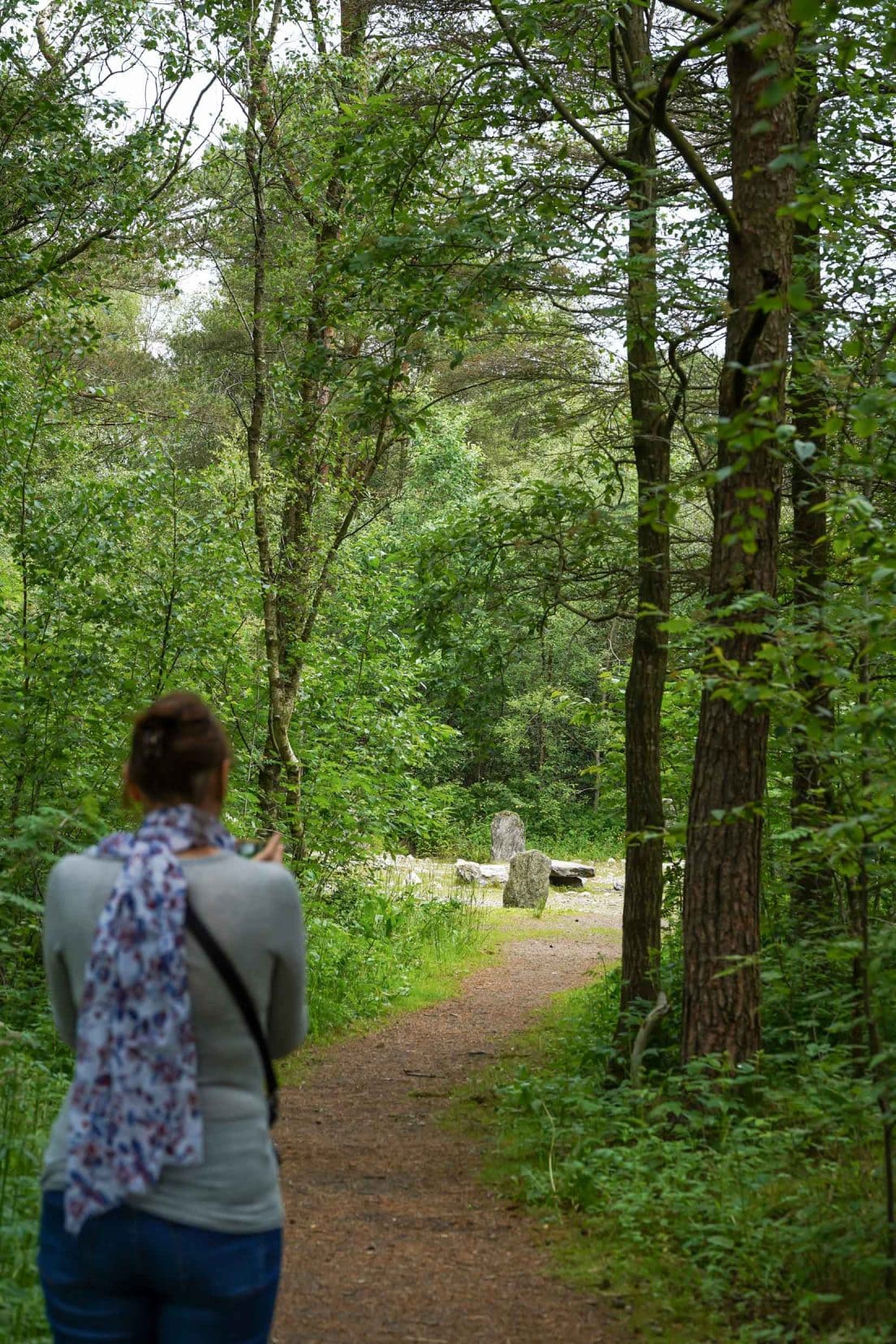
They were like the ancient stones we saw on Orkney and the Outer Hebrides. Orkney has close ties with Norway, so maybe there is some ancient connection.
These, in turn, resemble the Clava Cairns burial we visited near Culloden in Scotland, and if you are a fan of the hit show Outlander, you’ll appreciate their magical meaning.
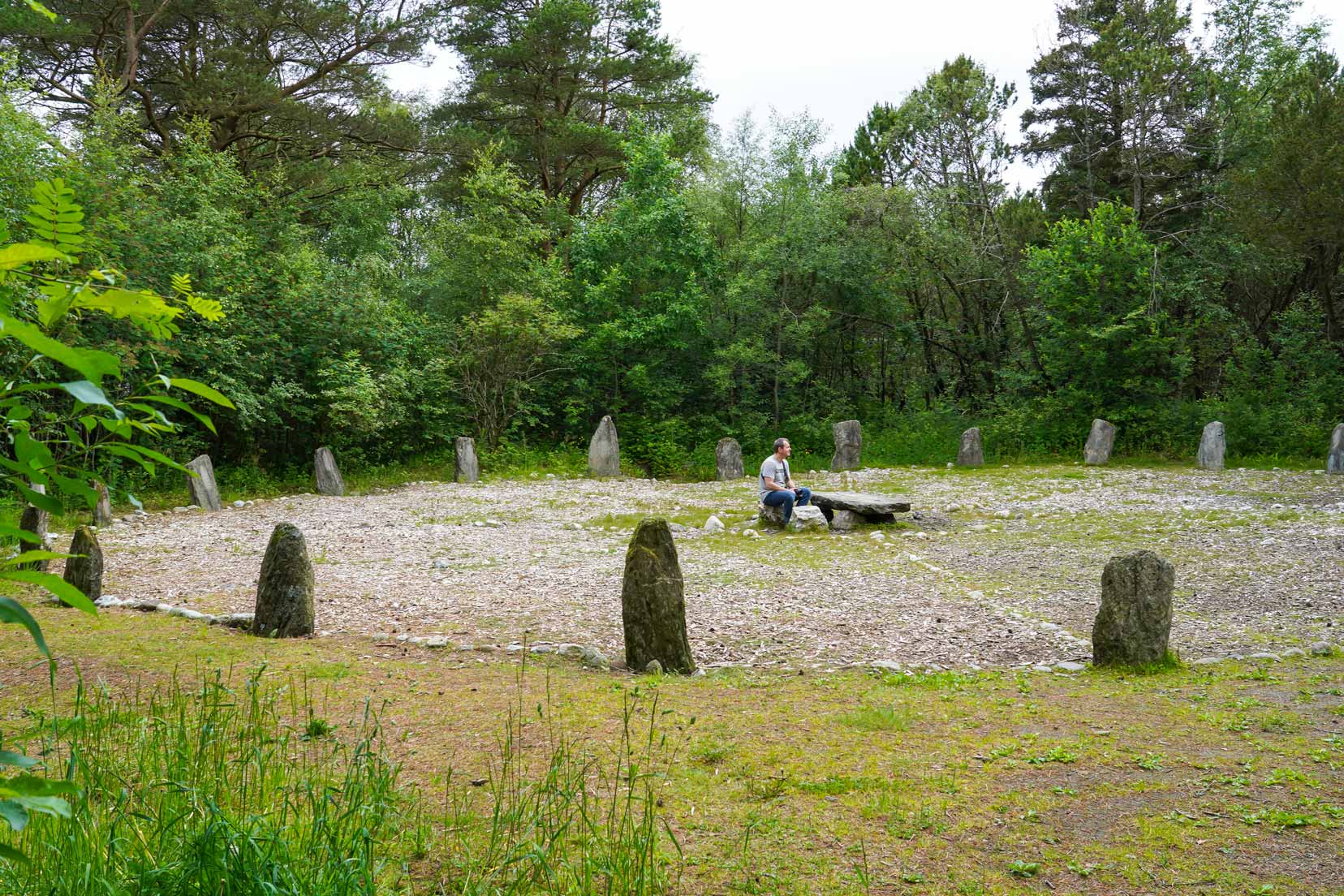
14. Enjoy Coffee and Culture at Hå Old Vicarage, Cafe and Burial Grounds
Hå old vicarage, dating from the 17th century, is now an art and culture exhibition building and an art shop.
Here, you’ll also find a Café serving local food with terrace seating overlooking the ocean.
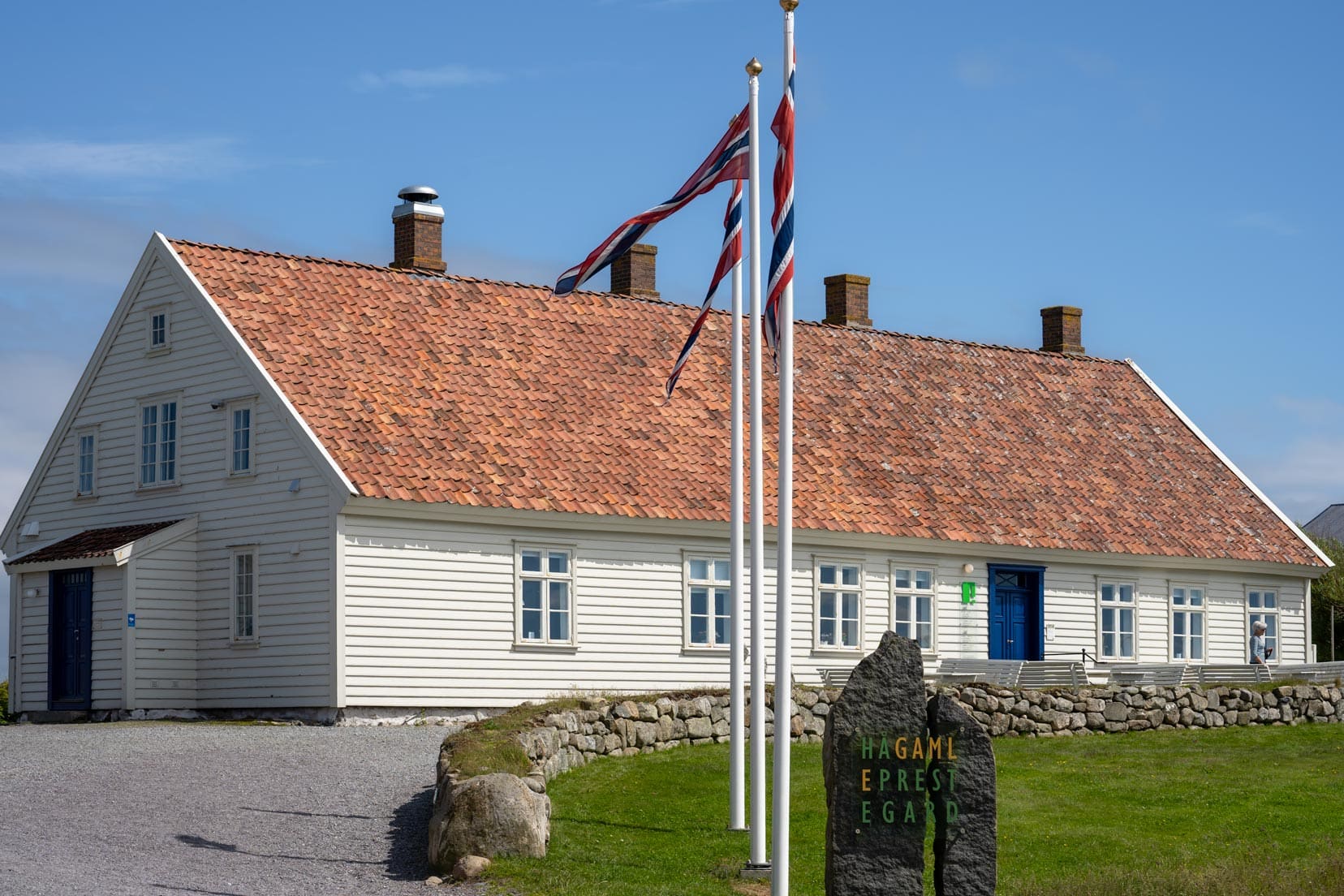
Next to the vicarage are remains of a settlement dating back over 8,000 years. The burial ground at Hå dates from about 500 AD.
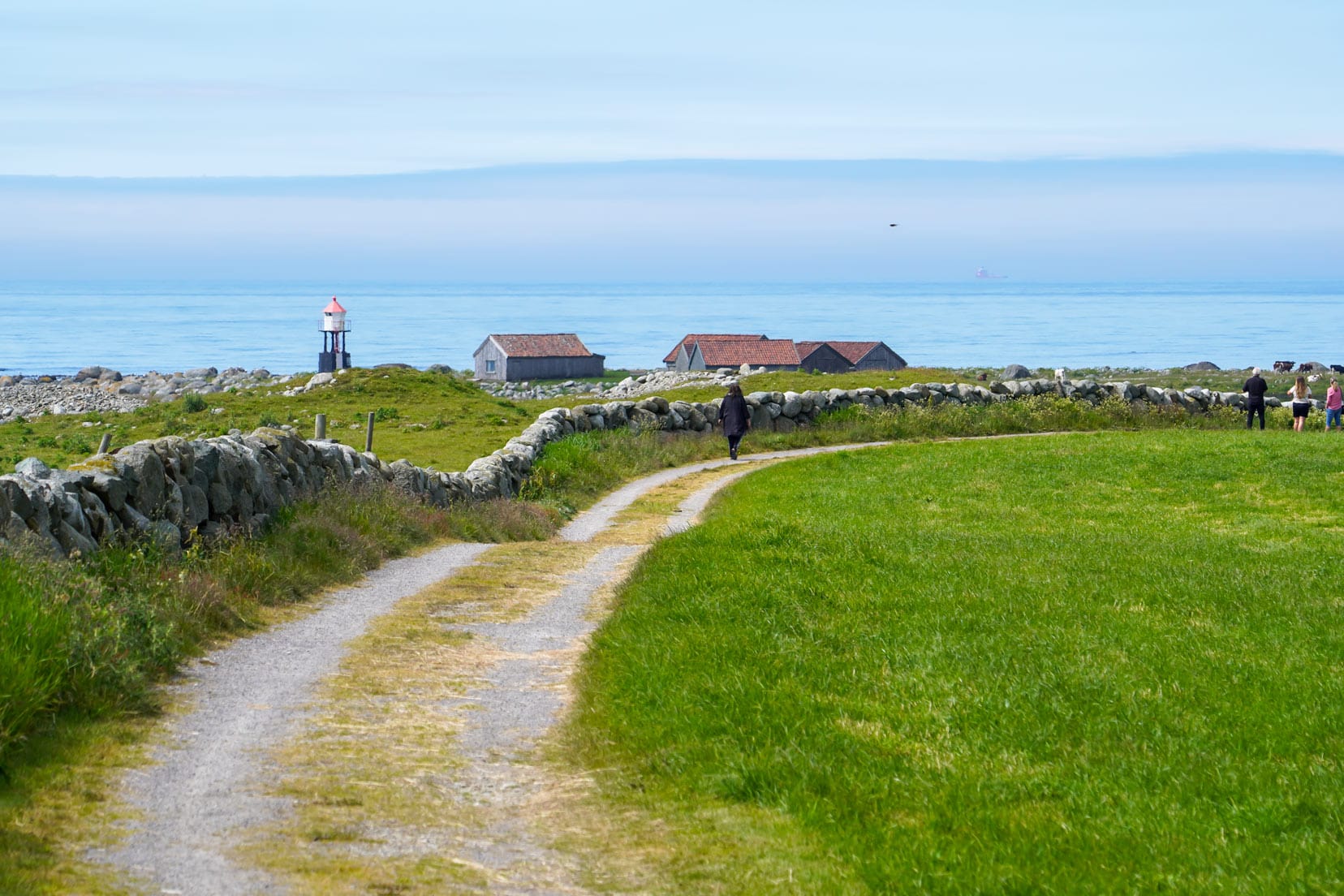
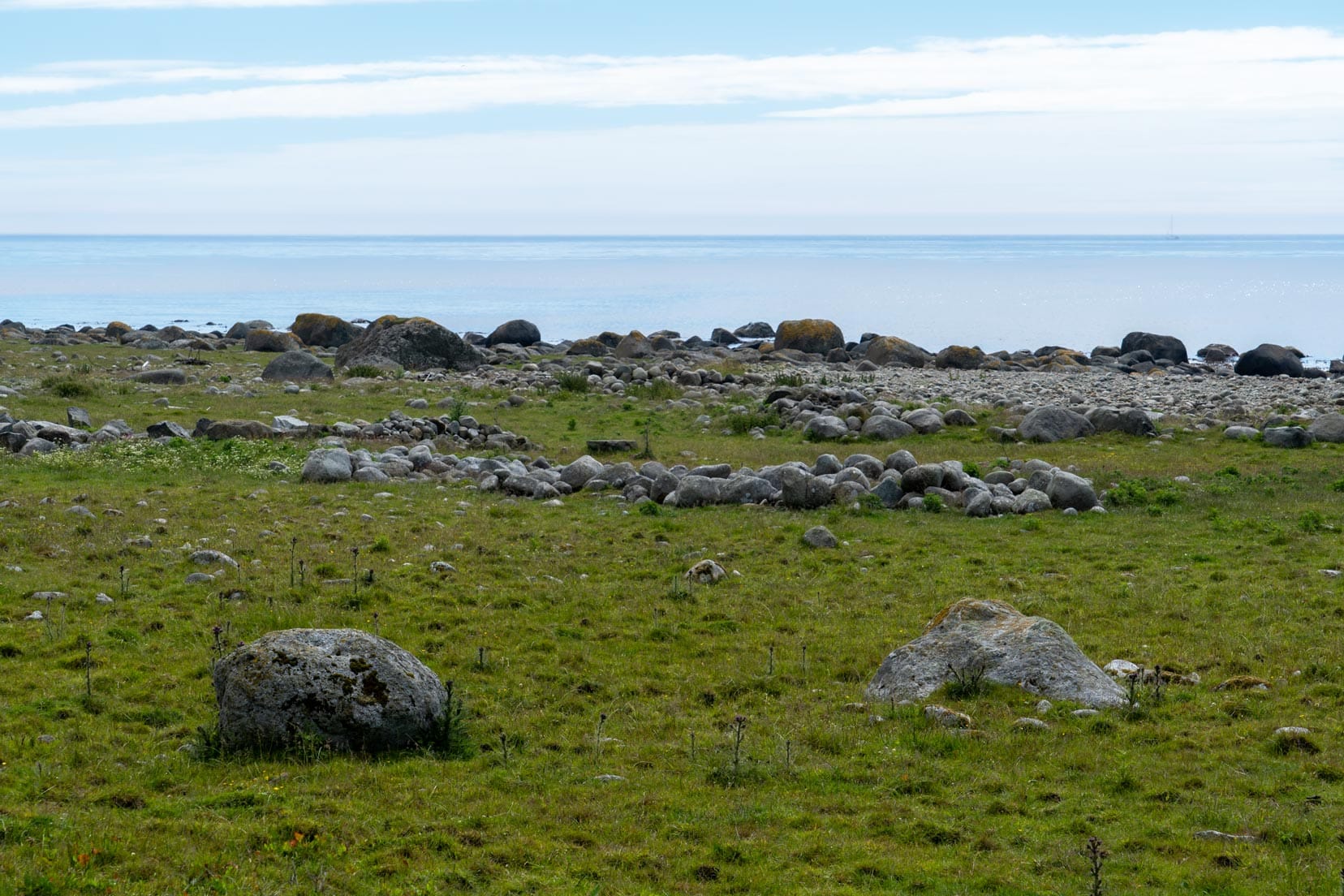
15. Hang out with the Sheep Around Hitler’s Teeth
During WWII, the Germans used prisoners of war to build a concrete blockade on Norway’s shore to prevent Allied troops from landing with tanks.
The Germans believed an attack was more likely due to the land topography. Apparently, Norwegians mixing the concrete altered the sand content to reduce the strength of the blocks.
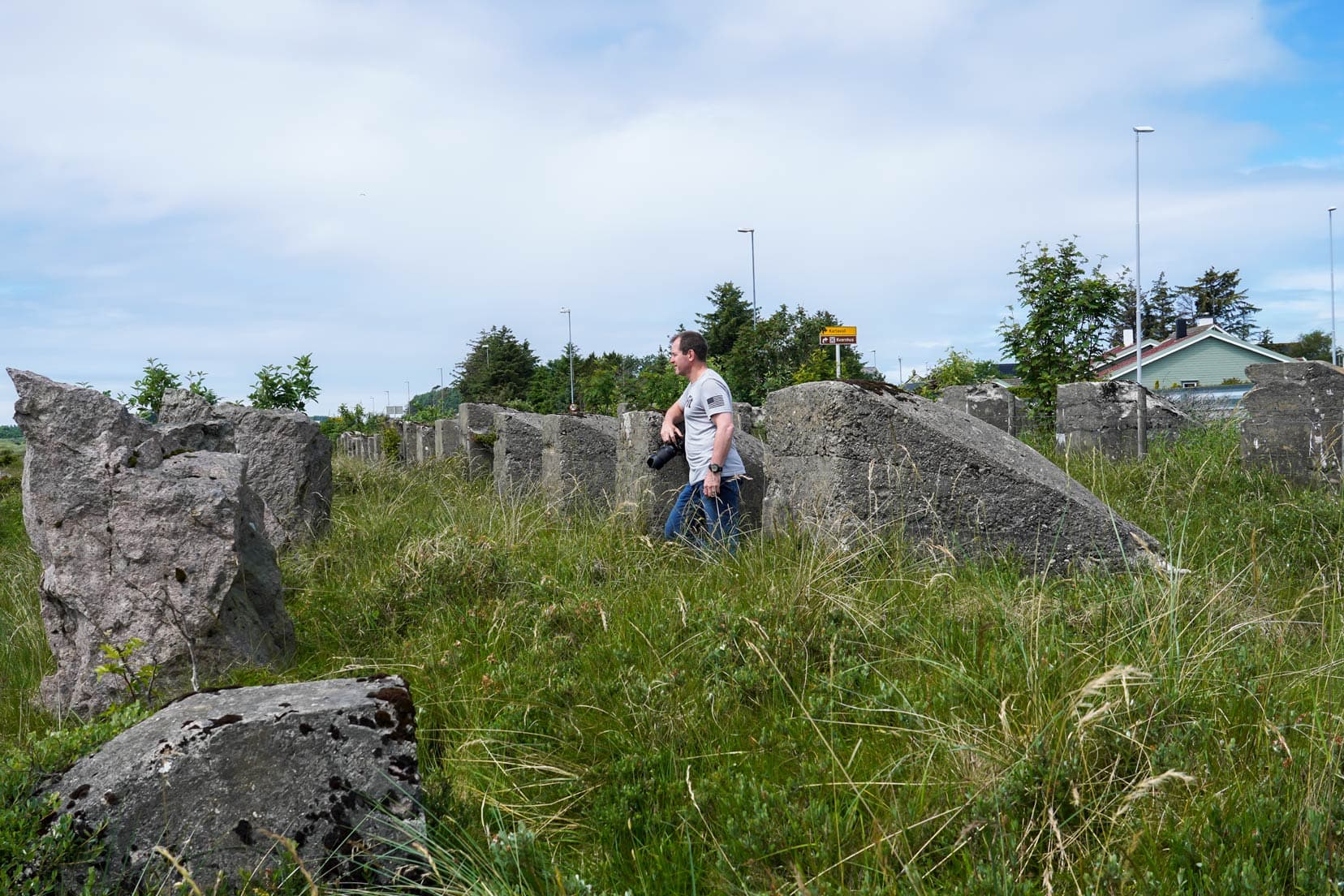
16. Stavanger Christmas Market
If you are visiting Stavanger from the end of November to mid-December, then you’ll want to check out the festivities at Stavanger Christmas Market (Julemarked in Byparken)
Stavanger’s city park becomes alive with Christmas magic, full of gifts, food and festive activities in Byparken.
Kjeringholmen has an ice rink and check out the Gingerbread City at the Oil Museum.
For Hiking and Adventure Seekers
Stavanger is the ideal city to organise hiking trips to the incredible surrounding mountain peaks and azure fjords. Here are a few recommended options for both the adventurous and those who’d prefer a leisurely visit to this area of natural beauty.
17. Hike Kjeragbolten
You must be relatively fit to hike to Kjeragbolten. It is a demanding 4.5-hour hike with alternating steep inclines and declines.
However, if you are up for the challenge, you will be rewarded with magnificent scenery and come face-to-face with my nemesis, the Kjerag Bolt.
This rock is unbelievably wedged between two cliff faces at 1000 metres above Lysefjord below. It was here that my story about the hike, Fear at the Rockface, came to fruition.
▶ Related: Find out all you need to know about hiking Kjergbolten.
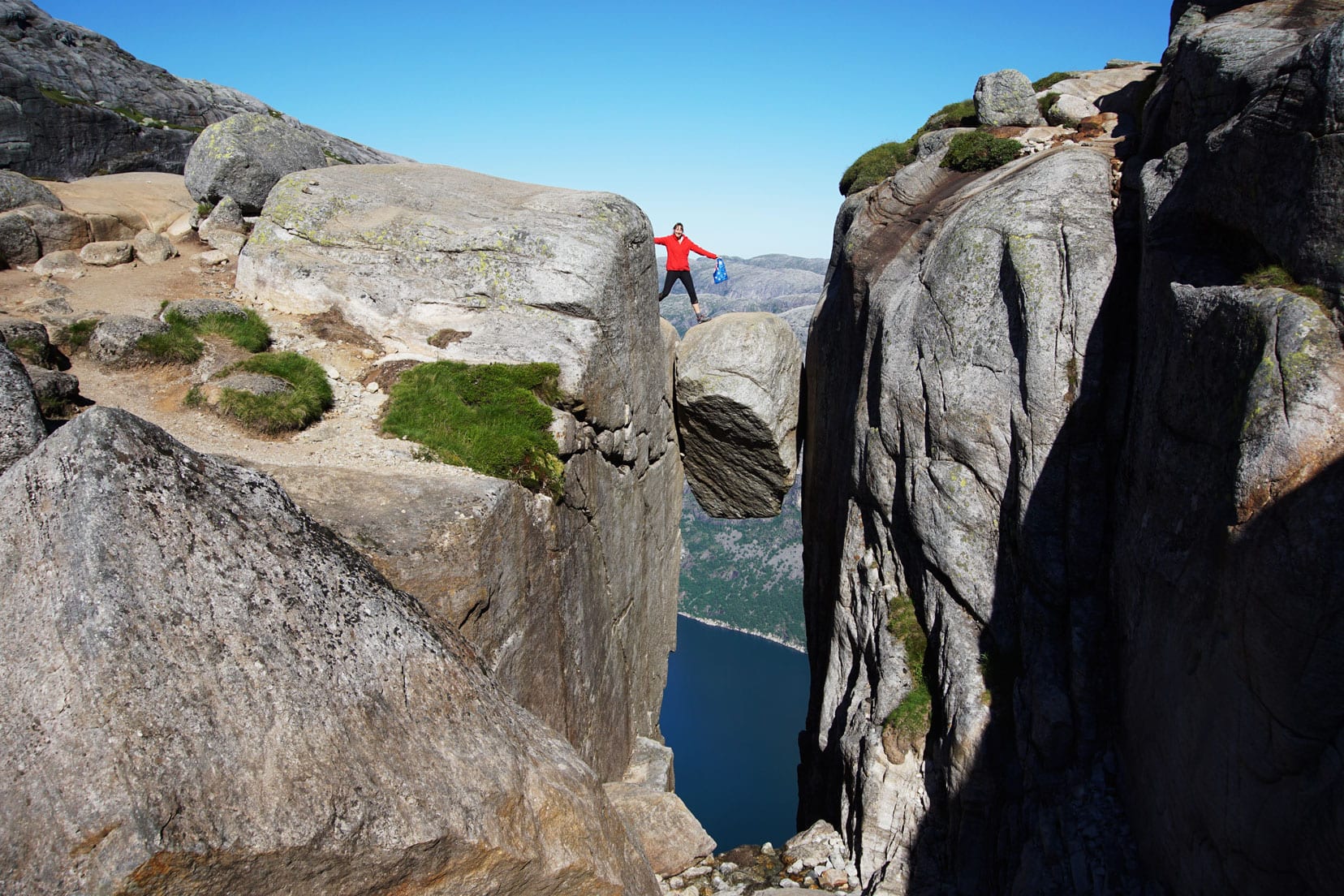
⭐️ If you would prefer a guided hike to Kjeragbolten, book this tour and get picked up from your hotel — including an optional Lysefjord boat tour. (Free cancellation 24 hours before with full refund, and buy now pay later option)
18. Hike to Pulpit Rock (Preikestolen)
Hiking to Preikestolen or Pulpit Rock is easier than hiking to Kjeragbolten but can still be challenging. The views over the Lysefjord and the scenery during the hike are well worth the climb to this iconic Norwegian precipice, 604 metres above the fjord.
We hiked to Pulpit Rock on a beautiful, warm summer’s day in the late afternoon. You can find out all about how to get there, and what it’s like and see the incredible views from our photos in our post here.
You may also want to take a guided hike like the one below. Or, if you are visiting in Winter you may like this Winter Guided Hike of Preikestolen.
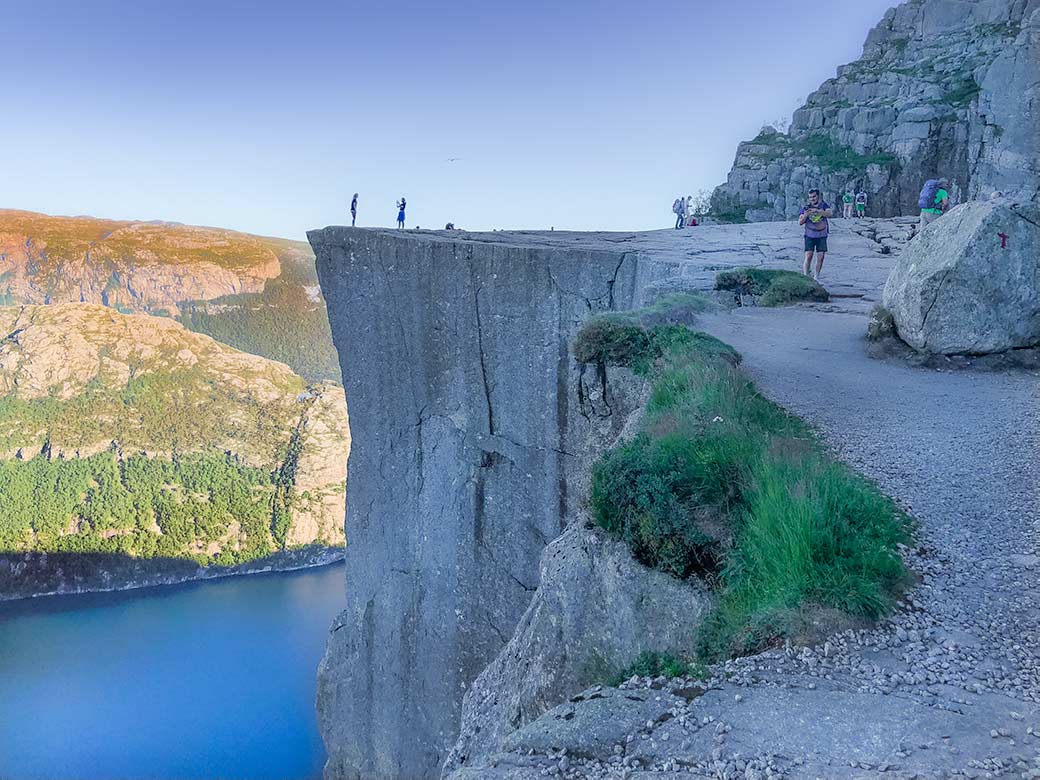
Visitor Tips:
- Best Time to Hike: Early morning or late afternoon to avoid the crowds and experience the best lighting for photographs.
- Preparation: Wear appropriate hiking gear and bring plenty of water and snacks. The weather can change quickly, so be prepared for varying conditions.
- Safety: Stay on the marked paths and follow local guidelines to ensure a safe hiking experience.
⭐️ Check out this Preikestolen (Pulpit Rock) Guided Hike with hotel pick-up. (Free cancellation and full refund up to 24 hours before) | ⭐️ 4.8/5 | ⏰ 9 hours
19. Climb the Flørli Steps
The Florlitrappene are 4,444 steps that follow water pipelines and rails once used to transport a trolley from the top of the mountain down to Lysefjord below. It’s one of the longest staircases in the world.
Not on my list of things to do in the Stavanger region, but for those adventurers for whom height and vertigo aren’t an issue, then this might be a climb and hike to consider.
It is recommended to only climb up the stairs and to hike around the circular route for your return. Note that this hike is listed as challenging.
20. Hike along the Kongevegen Route
Kongevegen is an easy-rated 8.4 km hike along Jaeren’s coast from Hå Gamle Prestegard to Varhaug Church.
It’s about three hours one way, and it takes you along some of the old remains of the ‘King’s Road’ from the 1600s.
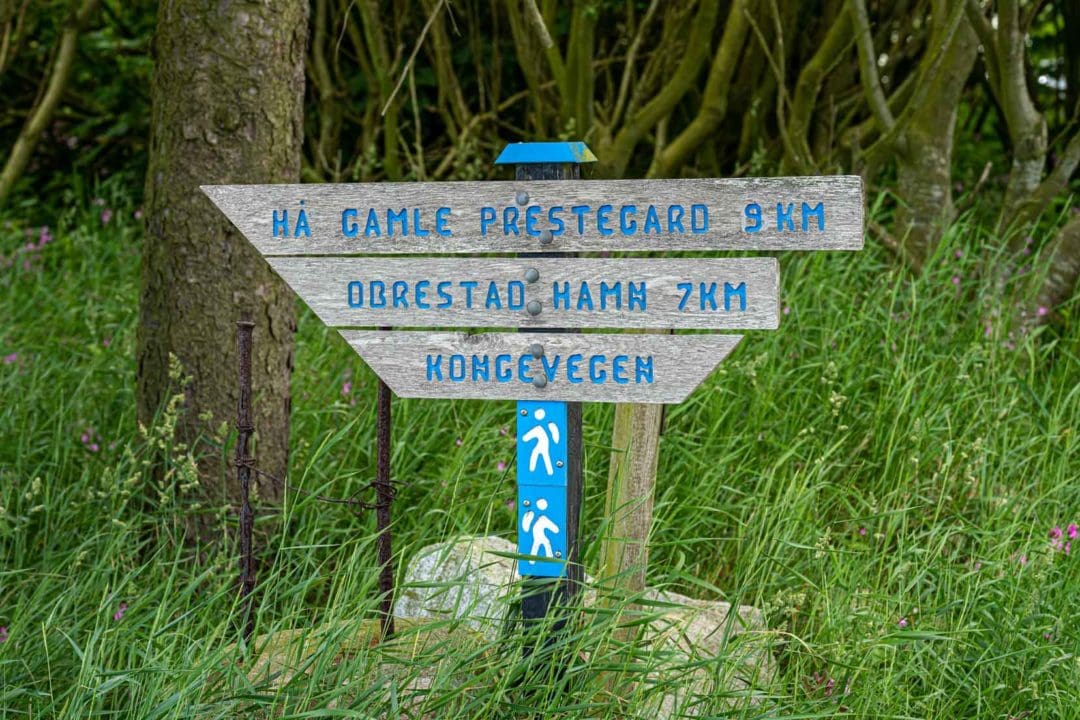
Nature and Scenic Views
Not only is the city itself full of things to do, but Stavanger also has more than 250 tiny islands sprinkled around its shores. Much of this archipelago is accessible by bridges and undersea tunnels.
The Jæren lowlands to the south take you through the area’s important agricultural lands and dramatic mountain peaks and sparkling Lysfjord call to you from the east.
Here, you come to some of the sandiest beaches in Norway. Heading north from Stavanger, you’ll find Stavanger’s archipelago of tiny islands offering an escape from city life.
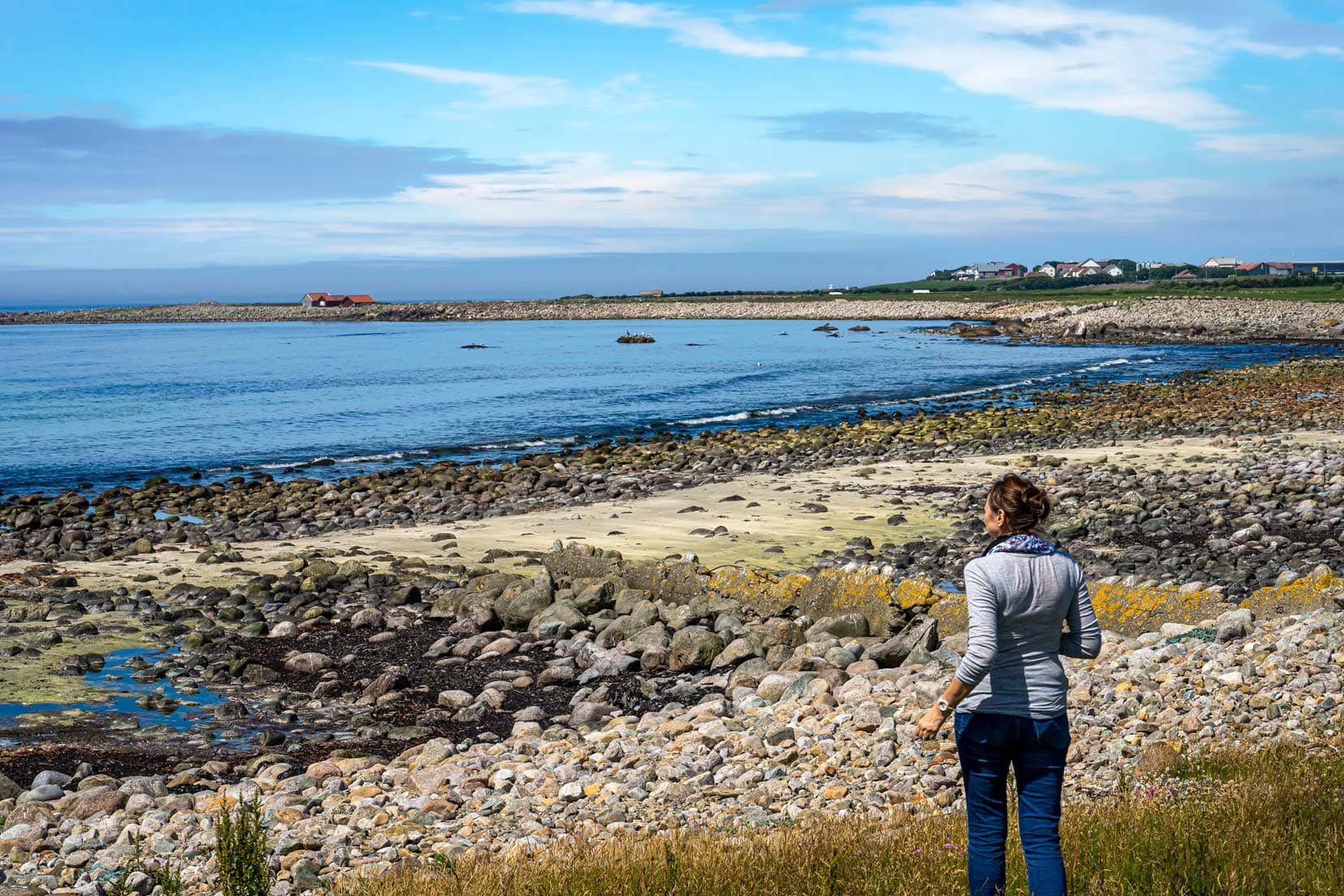
21. Cruise along Lysefjord
Several cruises take you along the serene Lysefjord, as well as a fjord tourist ferry. You can pick a slow kayaking trip, a safari tour or a scenic tour.
Most cruises take you under the imposing Pulpit Rock whilst exploring beautiful gorges and waterfalls, and you may meet some of the fjord seals.
Lysefjord tours include:
⭐️ Scenic Cruise of Lysefjorden and Pulpit Rock from below
⭐️ A Waterfalls, Rocks and Caves Scenic Cruise along Lysefjord
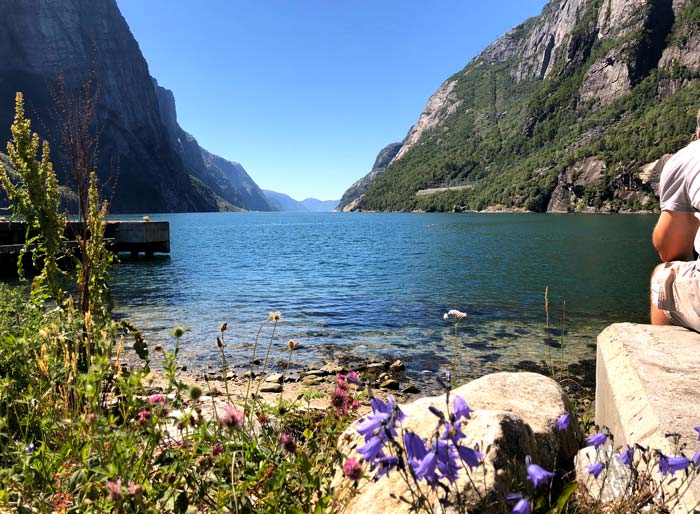
22. Get the Sand Between Your Toes at Solastranden Beach
Solastranden Beach ranked as one of the best beaches in the world, is a 2.3 km white sand beach sheltered by dunes. It’s popular for watersports, such as surfing, windsurfing and kite-surfing.
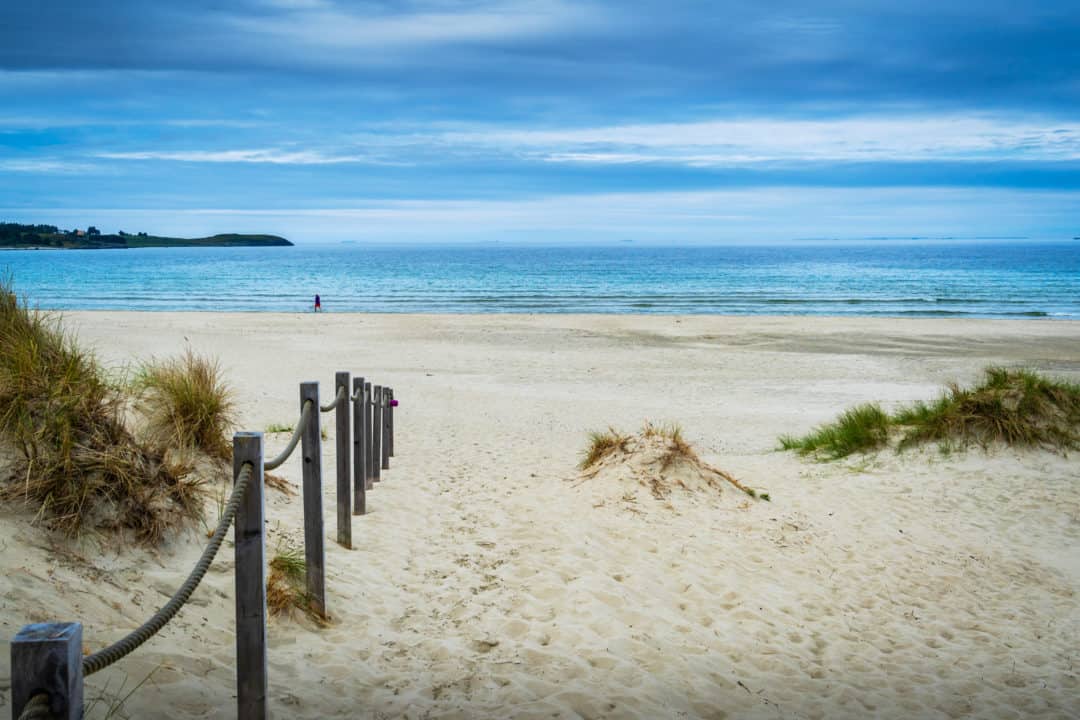
23. Take a trip along the Jaeren Scenic Route
Heading south from Stavanger, you venture onto the Jaeren Scenic Routethat runs through the lowlands of Western Norway.
It’s part of the larger North Sea Route from Kristiansand to Haugesund. Jaeren boasts the largest lowland area in Norway and stretches 41 kilometres between Ogna and Bore.
Laced along Jaeren’s coastline are dunes and rocky boulders, wildflowers and wide ocean views, cultural heritage sites and historical buildings.
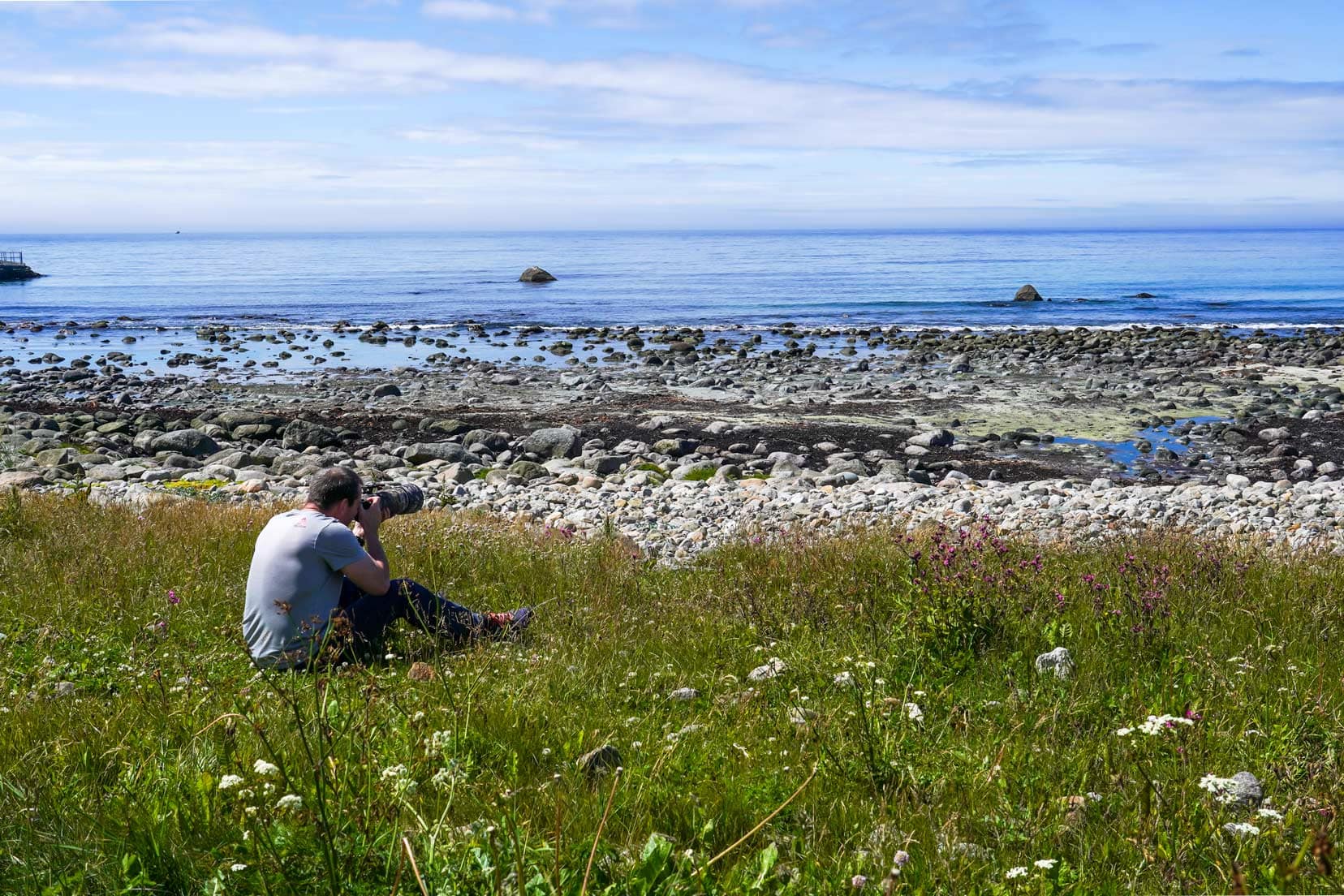
The Jaeren Route is one of Norway’s scenic routes. But the road itself does not have the type of stunning scenery we have grown to expect from Norway.
The landscape seen from the road is rather repetitive. After all, it is the largest lowland area in Norway, so there are endless fields of crops and cattle farms.
The green fields, stone fences and cute calves are enticing at first, but Jaeren’s appeal is not on the route itself, but on what you’ll find on its many sideroad detours towards the coast.
24. Get Back to Nature at Orrestranda Beach and Conservation Wetlands

Stop here in summer to wander through these protected wetland areas. A boarded path winds towards Norway’s longest sandy beach, Orrestranda.
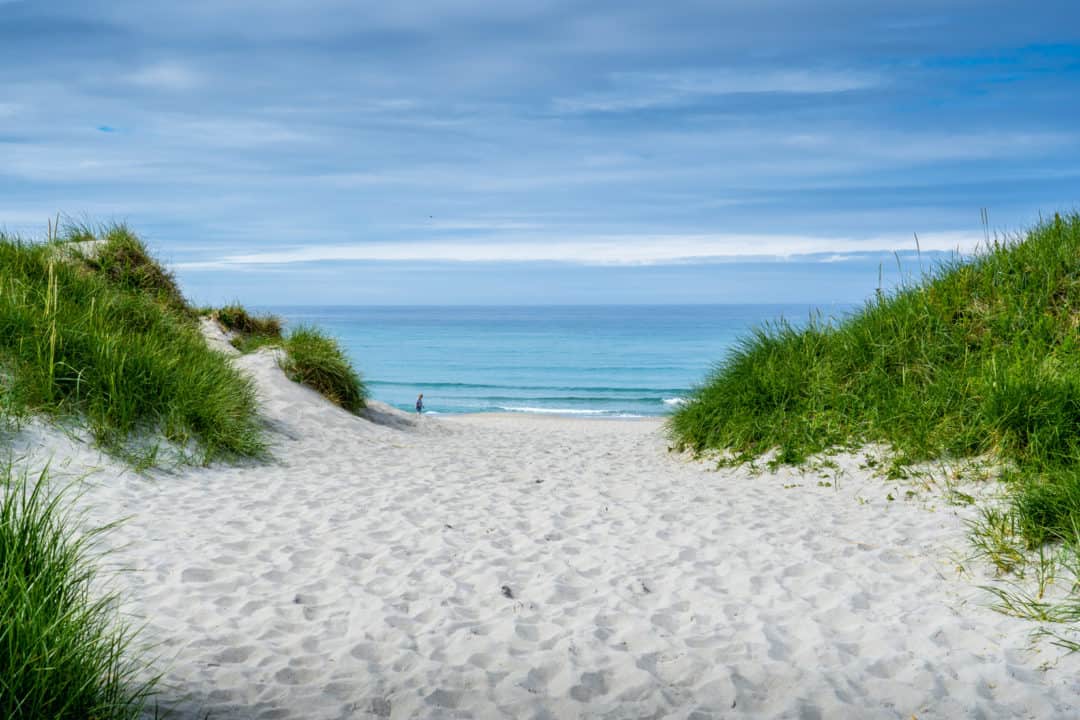
You’ll pass a narrow stream festooned with river reeds on the way towards the dunes. Cheerful chirps fill the air, suggesting that you may spot one of the many bird varieties that visit over summer if you are patient.

This is a place beckoning you to unwind, to sit among the wildflowers while bees and butterflies flit around you.
If you have time – take a detour to Frøylandsvatnet. The lake is excellent for bird watching and has a 230-metre uniquely designed bridge, the Midgardsormen Bridge.
25. Stop to Admire the Photogenic Old Churchyard of Varhaug
The first Varhaug church was built in the 13th century but demolished in 1905. In its place, a small chapel now stands.
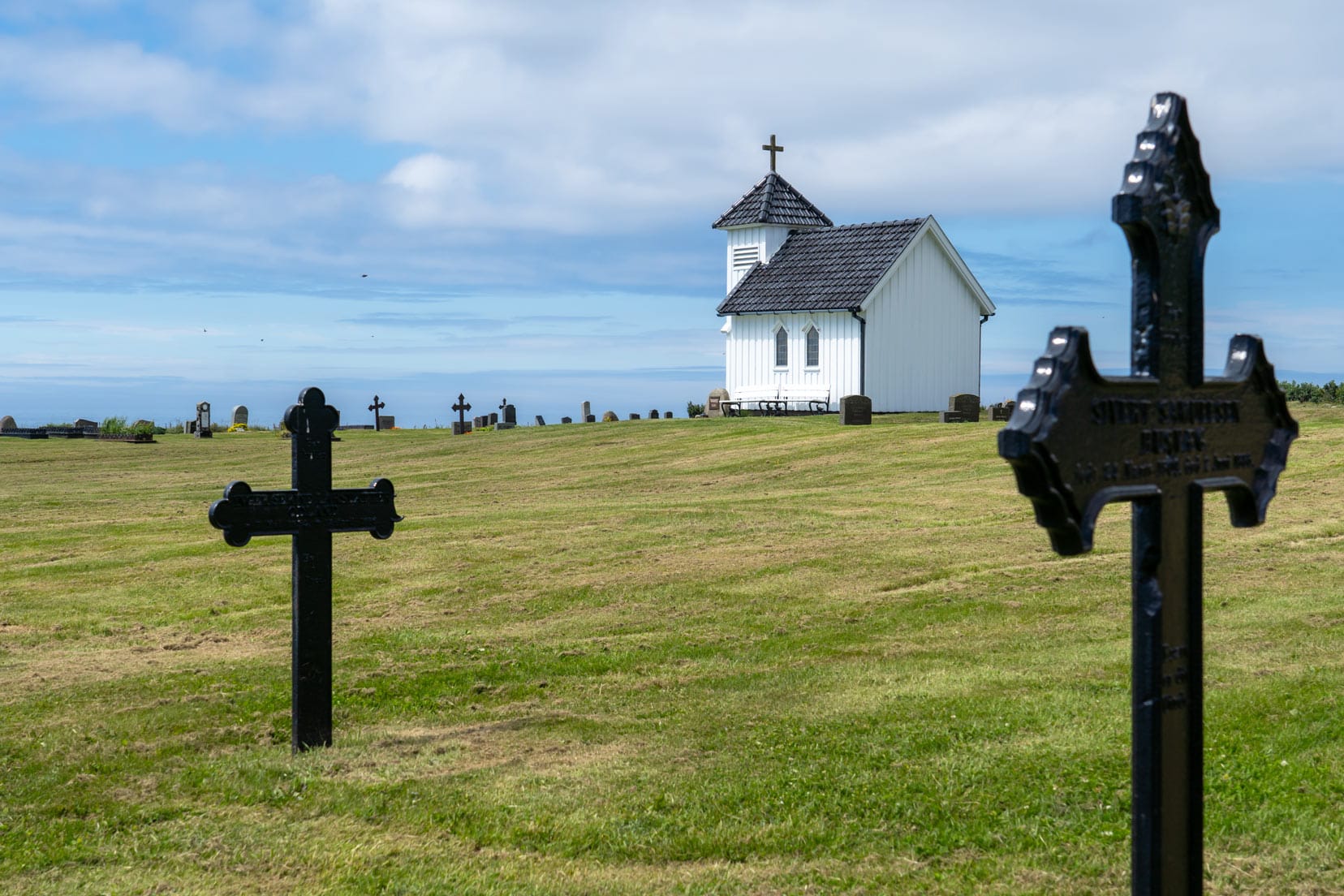
We spoke to a local visiting the grave of his great-great-grandfather buried in the old churchyard in 1914. He mentioned that this chapel is popular for wedding ceremonies because of the picturesque setting.
The chapel has uninterrupted views of the vast ocean in front. Apparently, we were lucky to see it on a warm summer’s day because most of the time, the North Sea winds buffet this tiny chapel.
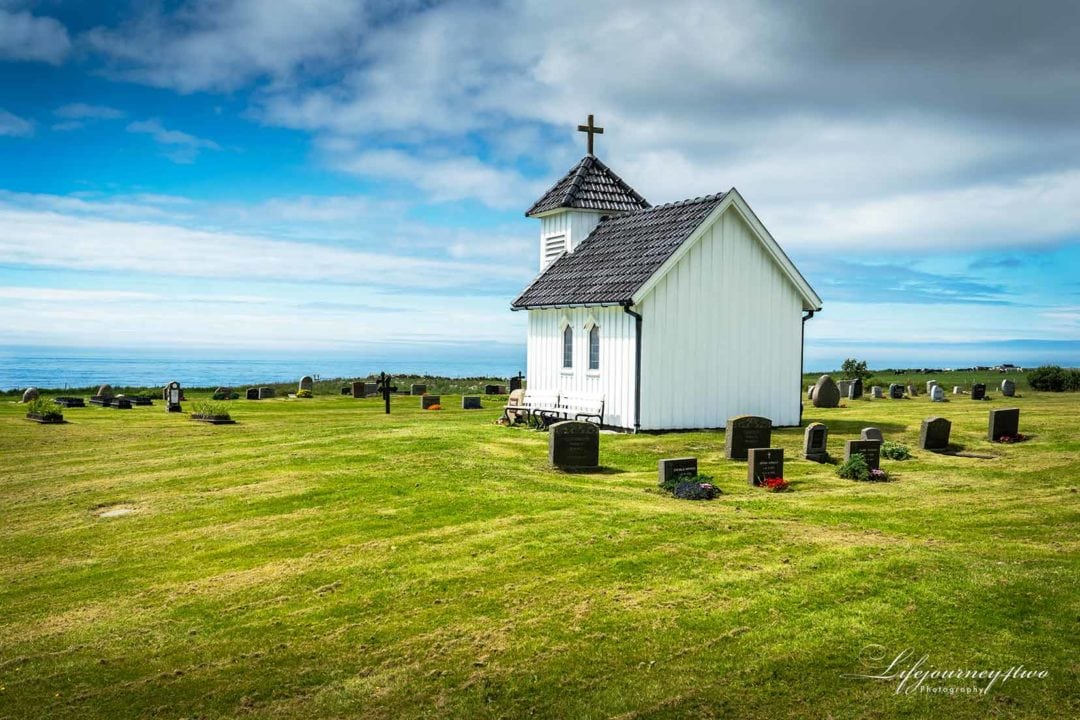
26. Admire the Coastline at Kvassheim lighthouse
The Kvassheim lighthouse was one of the last lighthouses built along this stretch of coast in 1912 and guided ships safely past the dangerous Jaeren Coast until 1990.
Restored and reconstructed, this red and white wooden building contains exhibitions about marine rescue missions and local nature.
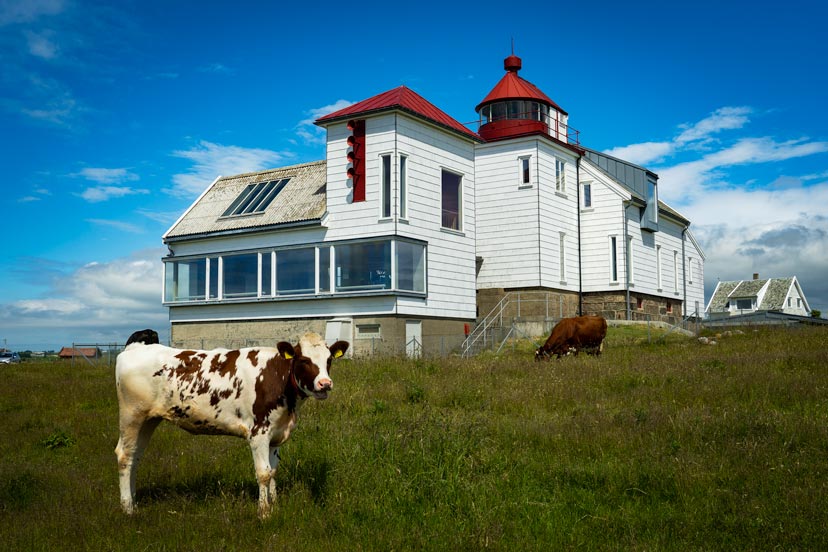
How to Get to Stavanger
✈️ By Air
Stavanger’s Sola Airport is the second largest international airport in Norway, after Oslo. There are direct flights to Stavanger from 20 international airports and locally from Bergen, Sandefjord, Trondheim and Oslo.
WEIRD FACT: Sola Airport produces its own honey from beehives along the runways.
To get to Stavanger from Sola Airport, you can catch a bus with Flybussen. The journey takes between 20 and 30 minutes and buses leave approximately every twenty minutes. You can buy your bus ticket on the bus or online — note that it is cheaper to do it online.
Check the timetable and Flybussen ticket prices here.
🚗 By Car
If arriving in Stavanger by car from mainland Europe, the easiest option is by ferry from Hirtshals in Denmark.
You can either book a ferry direct to Stavanger, or Kristiansand and then drive from there.
🚗 If you’re road-tripping, consider our suggested routes from:
🚌 By Bus
Buses depart from Oslo, Bergen, and Kristiansand to Stavanger.
🚊 By Train
The Norwegian Railway Network NSB runs trains to Stavanger from Oslo with the journey taking about eight hours.
🛳 By Ferry
Kolumbus operates a number of passenger ferries to hard-to-reach places, including Lysebotn, Ryfylke, Tau, Kvitsøyruten, Hjelmeland, Haugesund and the Stavanger islands.
🛳 Check out the Hirtshall ferry prices and times here.
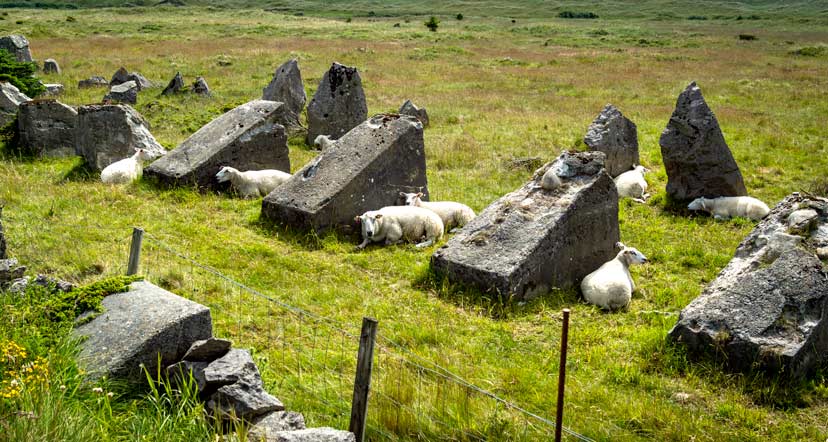
Where to eat in Stavanger
There are plenty of cafes and restaurants to choose from in Stavanger. Popular places include the cafes and restaurants around the harbour and at Ovre Holmegate (the colourful street).
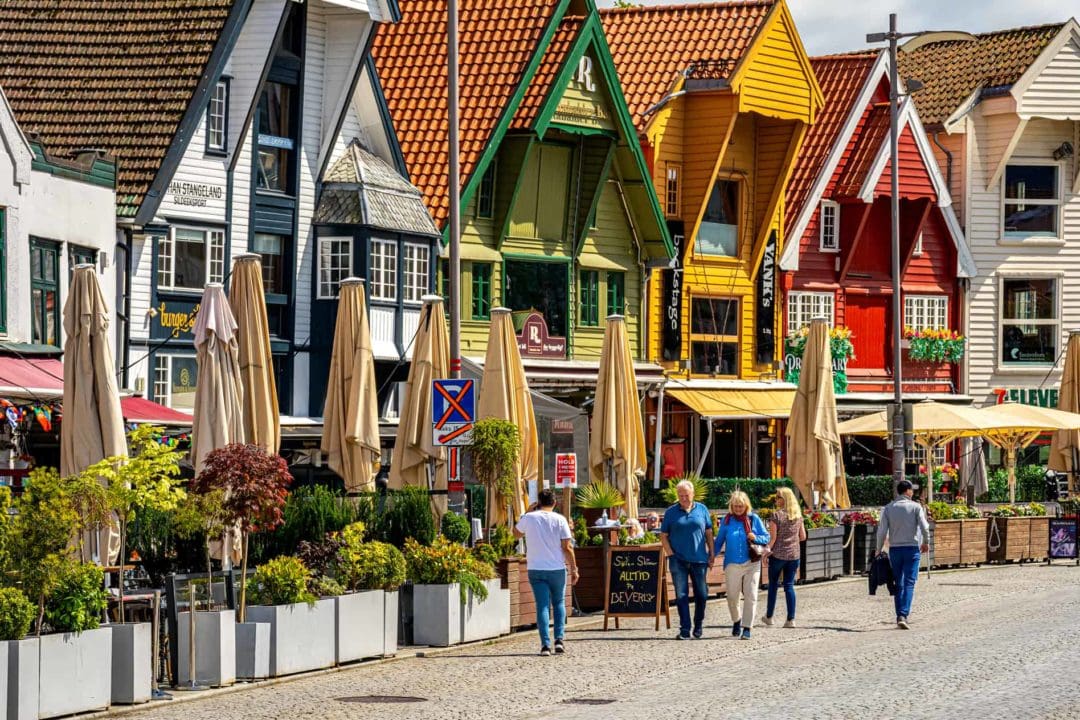
- CAFE/COFFEE /CAKE: The Iddis café by the Print Museum bustled with locals when we were there, which is always a good sign.
- LOCAL FISH: Torget Fish Market (Fisketorget) is in the centre of Stavanger. It has a well-stocked fish counter on one side and a restaurant on the other. Prawn sandwiches and fish soup are local favourites.
- INDIAN FOOD: Indian food is one of our favourites, so we popped into the Mogul Indian Restaurant and was one of the best Indians we have ever tasted.
- ITALIAN FOOD: Casa Gio is a friendly, intimate restaurant serving authentic Italian dishes

Where to stay in Stavanger
First-time visitors will find staying near Stavanger Old Town the most convenient as it is easy to walk between all of the main city attractions.
Scandic Stavanger City Hotel ⭐️⭐️⭐️⭐️
We stayed in the Scandic Stavanger City hotel with central Stavanger being within easy walking distance. It had a fabulous buffet breakfast included and was reasonably priced.
But don’t take our word for it, this is a review from another traveller:
“Modern, clean and spacious rooms. The staff were super friendly and went above and beyond. Incredible breakfast”
Nafeesa, UK , Read More Reviews here
🏨 BOOK or Check Prices for the Scandic Stavanger Hotel Here (700m from the centre)
Hotel Victoria ⭐️⭐️⭐️⭐️
Hotel Victoria is located on the waterfront. This Victorian-style building dates from 1900. The hotel has a cocktail bar, serving lunch and light meals.
The Norway Petroleum Museum and Stavanger’s quaint wooden houses are only a short walk away.
“Fabulous central location on the edge of the harbour and within an easy walk of the shops, cafes and tourism. Very helpful staff. Reception went the extra mile to assist with information and food recommendations. Lovely room and breakfast.”
— 10/10 Rating , John UK , Read More Reviews here
🏨 BOOK or check prices for the Scandic Stavanger Hotel Here (400m from the centre)
Radisson Blu Atlantic Hotel
The Radisson Blu Atlantic Hotel is rated fabulous by travellers. The hotel has great views of the fjord and mountains, complimentary Wi-Fi, and free fitness centre and sauna access.
The Firelake Grill restaurant, within the hotel, is known for its North American roots cuisine with a Nordic influence.
I had a great stay here – Sauna was a great facility in the cold rainy weather! Room was a great size with lake views and exceptionally clean too. Had a fab stay, will use this hotel again next time I come to Stavanger.
Sophi, UK 10/10 Rating — Read More Reviews here
🏨 BOOK or check prices for the Radisson Blu Atlantic Hotel here (200m from the centre)
Fancy A Sleepover at Obrestad Lighthouse?
Just south of Hå old vicarage, you’ll see Obrestad Lighthouse on the peninsula. Built in 1873, it is now a cultural history museum. The lighthouse keeper’s house is available for holiday accommodation.
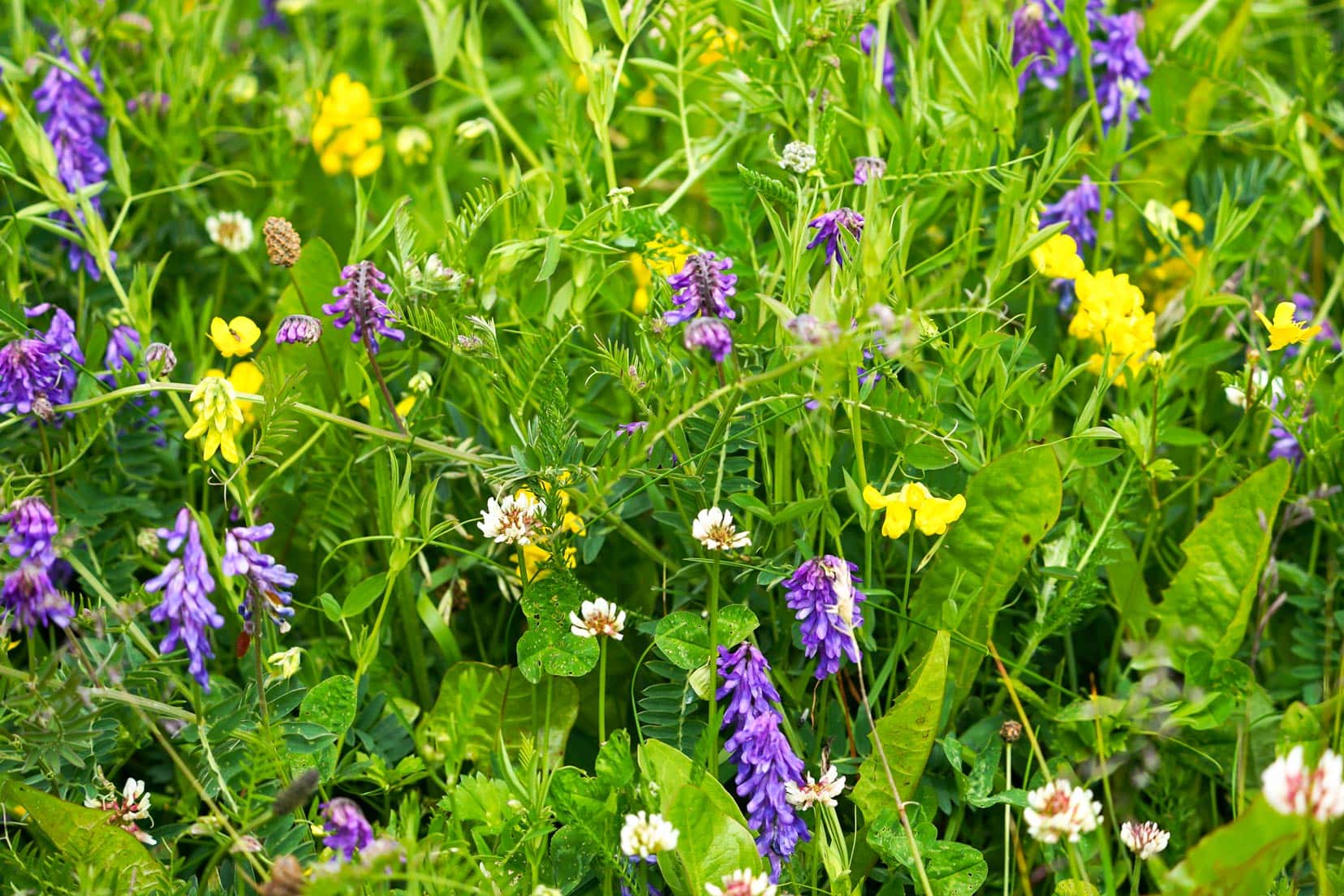
Is Stavanger Worth Visiting? Absolutely!
We’ve explored Stavanger, from its cobbled streets to the rugged peaks nearby, and every visit reveals something new. It’s a city that combines history with modernity in an exciting and deeply satisfying way.
If you’re wondering whether Stavanger should be on your travel list, we say go for it! It’s the place that offers a little something for everyone, whether you’re a history buff, an art lover, or an outdoor enthusiast.
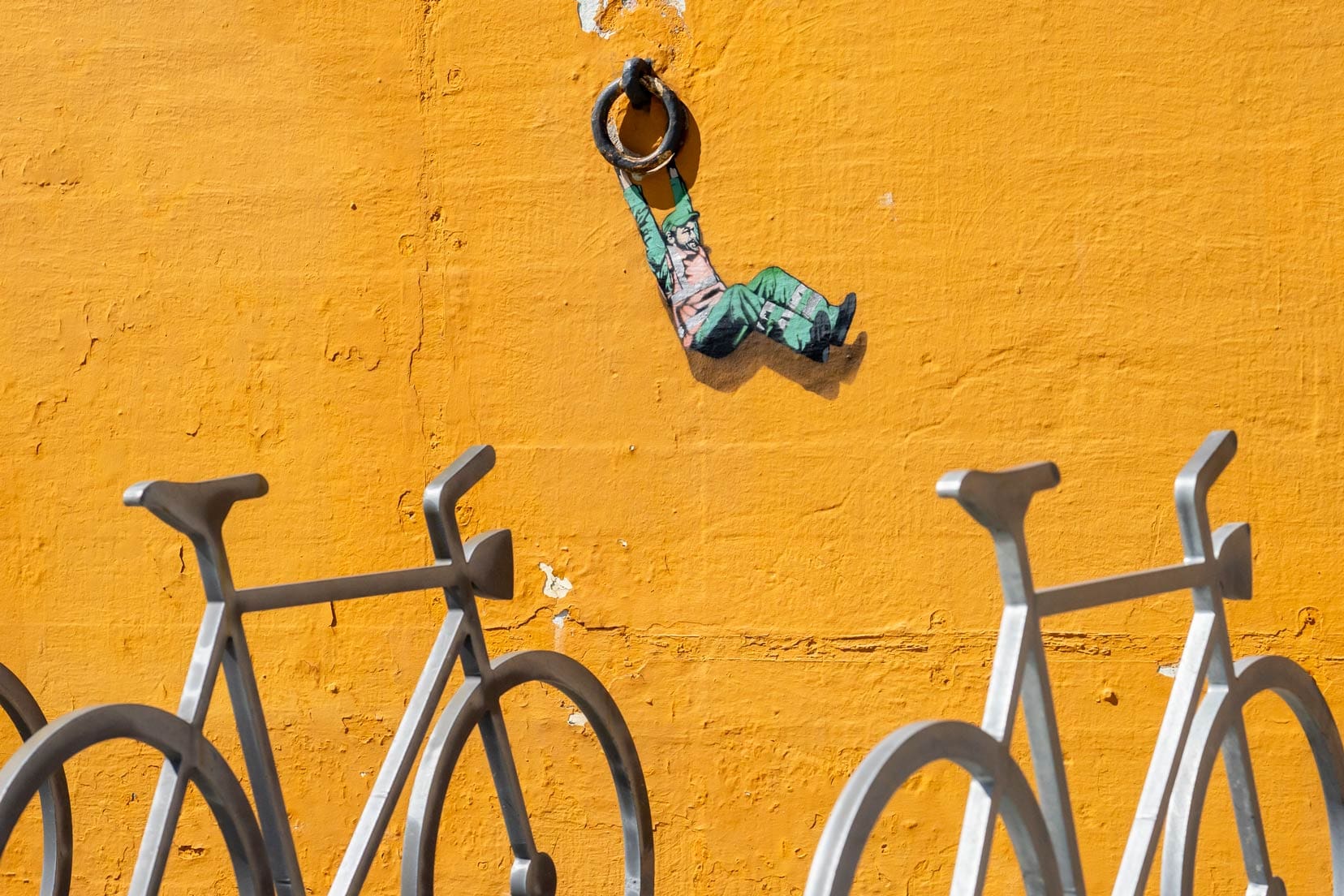
Did you visit any of the spots we mentioned, or did you find some hidden gems? We’re always excited to hear about your experiences and see your photos—sharing stories is part of the fun, after all!
Join our community on social media, where we continue the conversation about all things travel. Drop us a comment or a photo on Facebook or Instagram. We love seeing how our tips help you explore the world.
Stavanger is a city that keeps giving, and we think you’ll find it well worth the visit. Here’s to adventures that enrich, inspire, and bring us all a little closer. See you out there!
Read more:
- Road Trips around the World
- Visit Utsira – A Norwegian Island full of Street Art
- The Most Spectacular Hikes in Norway
- Norway Two Week Itinerary: Fjords, Falls and Fairytales
- Motorhoming in Europe
Pin and Save for Later
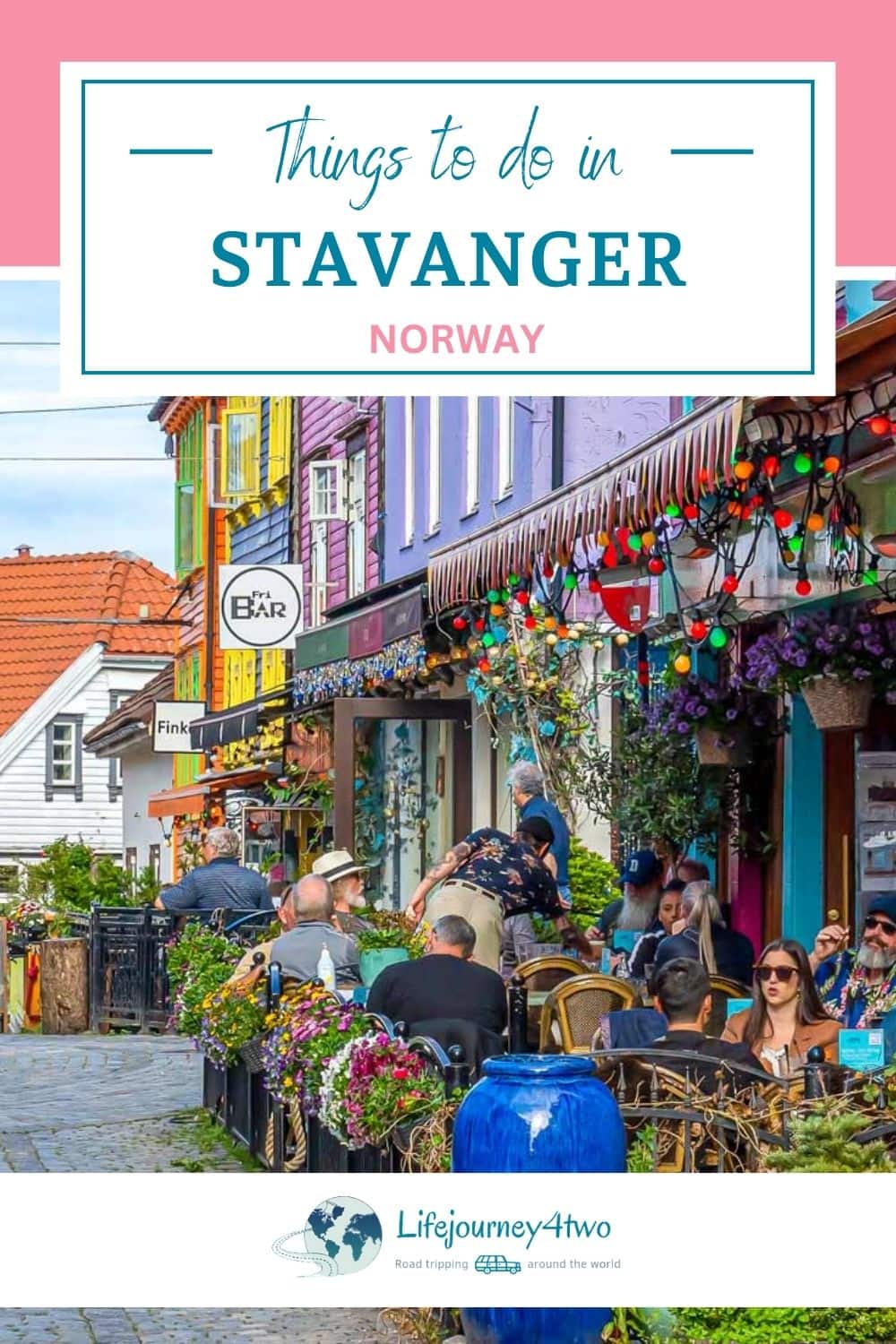
Planning Your Travels?
These are the travel resources we recommend and use when planning our trips.
- 🚘 Car Hire: We use DiscoverCars.com
- Motorhome/Campervan Rental: We highly recommend the Motorhome Republic
- 🪪 Order your International Driver’s Licence online here
- 🛏 Book Accommodation: We use Booking.com to find accommodation that suits our budget
- 🐶 Pet Sitting/Pet Sitters: Check Out TrustedHousesitters here (Use our Discount code: LIFEJOURNEY25 for 25% off. )
- Activities and Experiences: Get Your Guide and Viator
- Travel Insurance: Safetywing or World Nomads
- 🥾 Travel Gear and Accessories: Check out our top picks here — Lifejourney4two page on Amazon
For a more thorough list, visit our Travel Resources page here.

